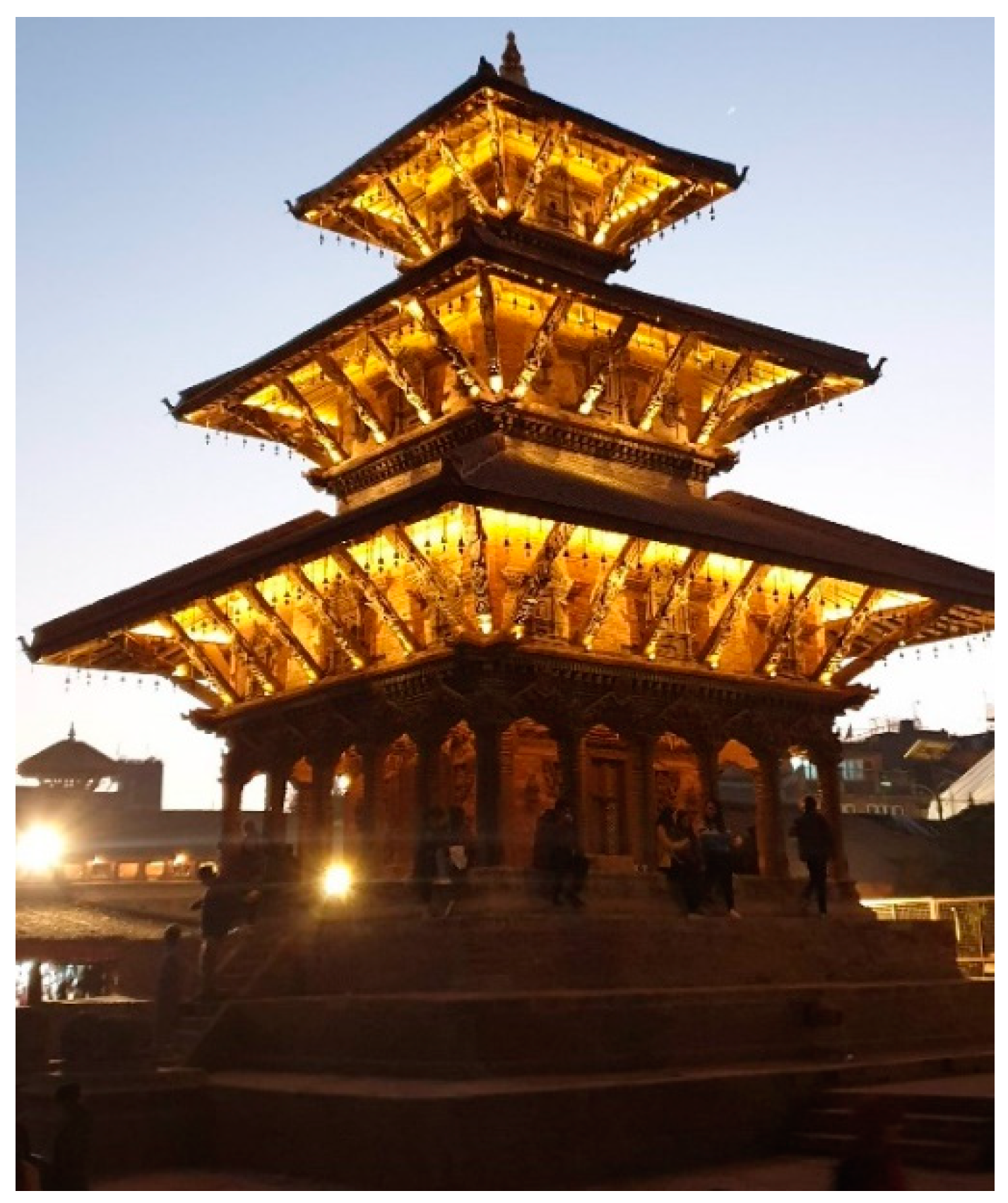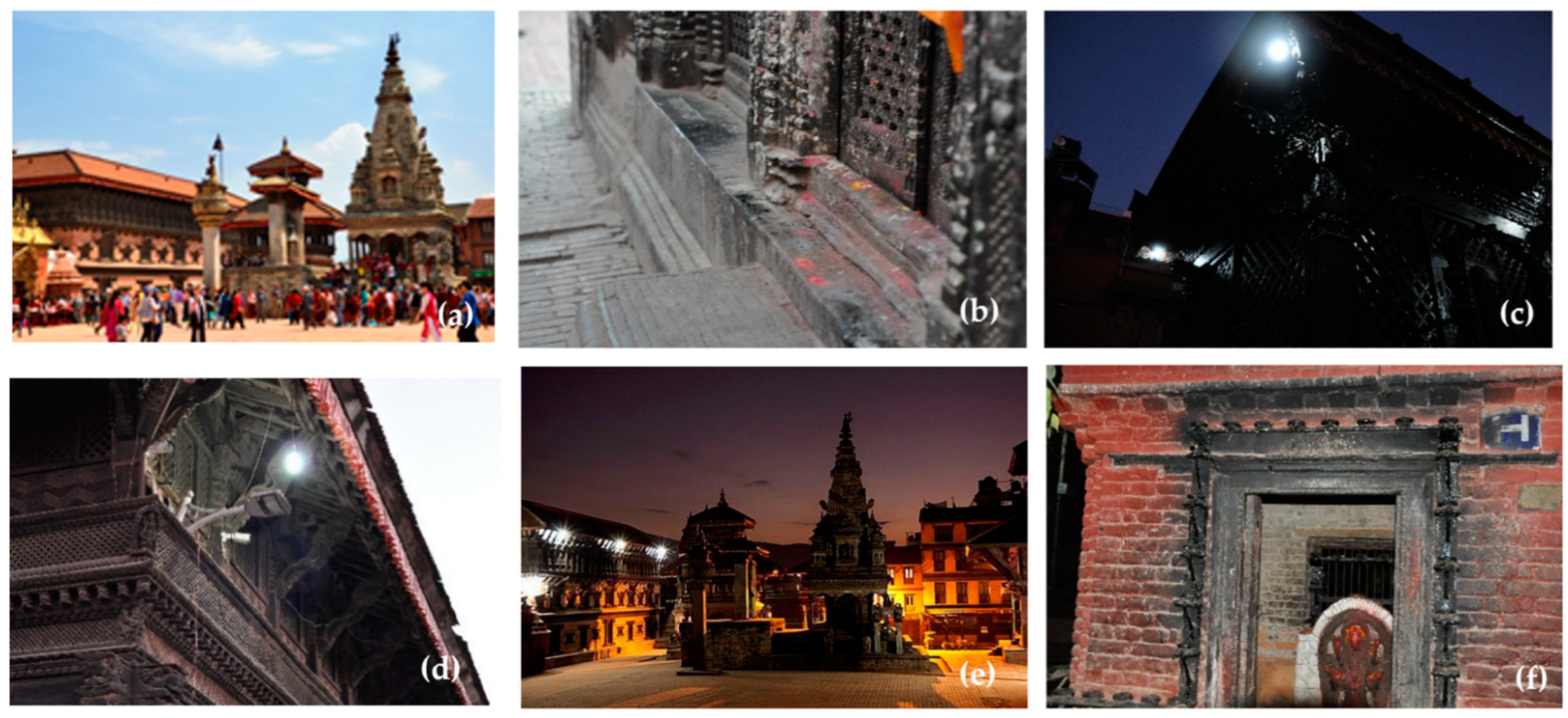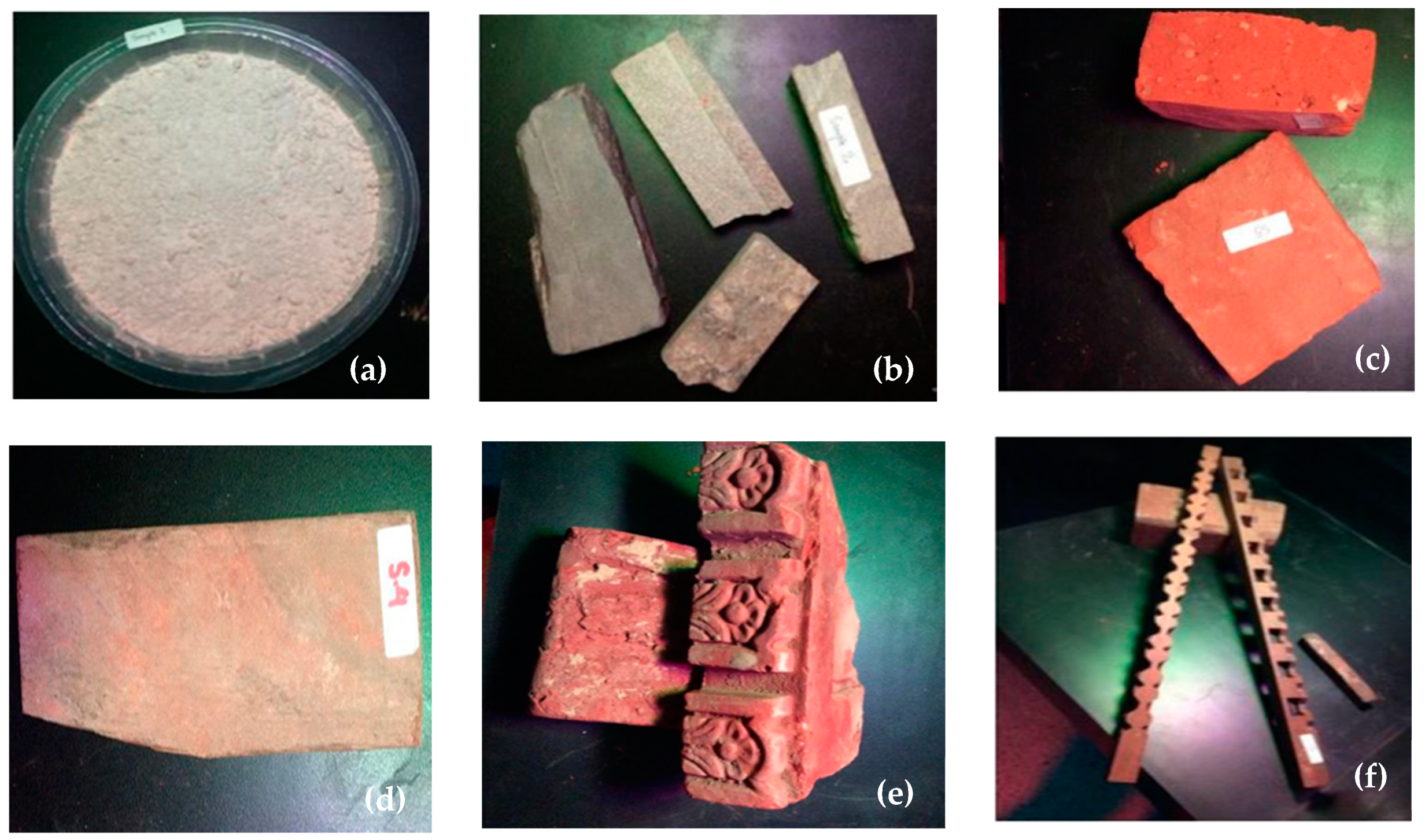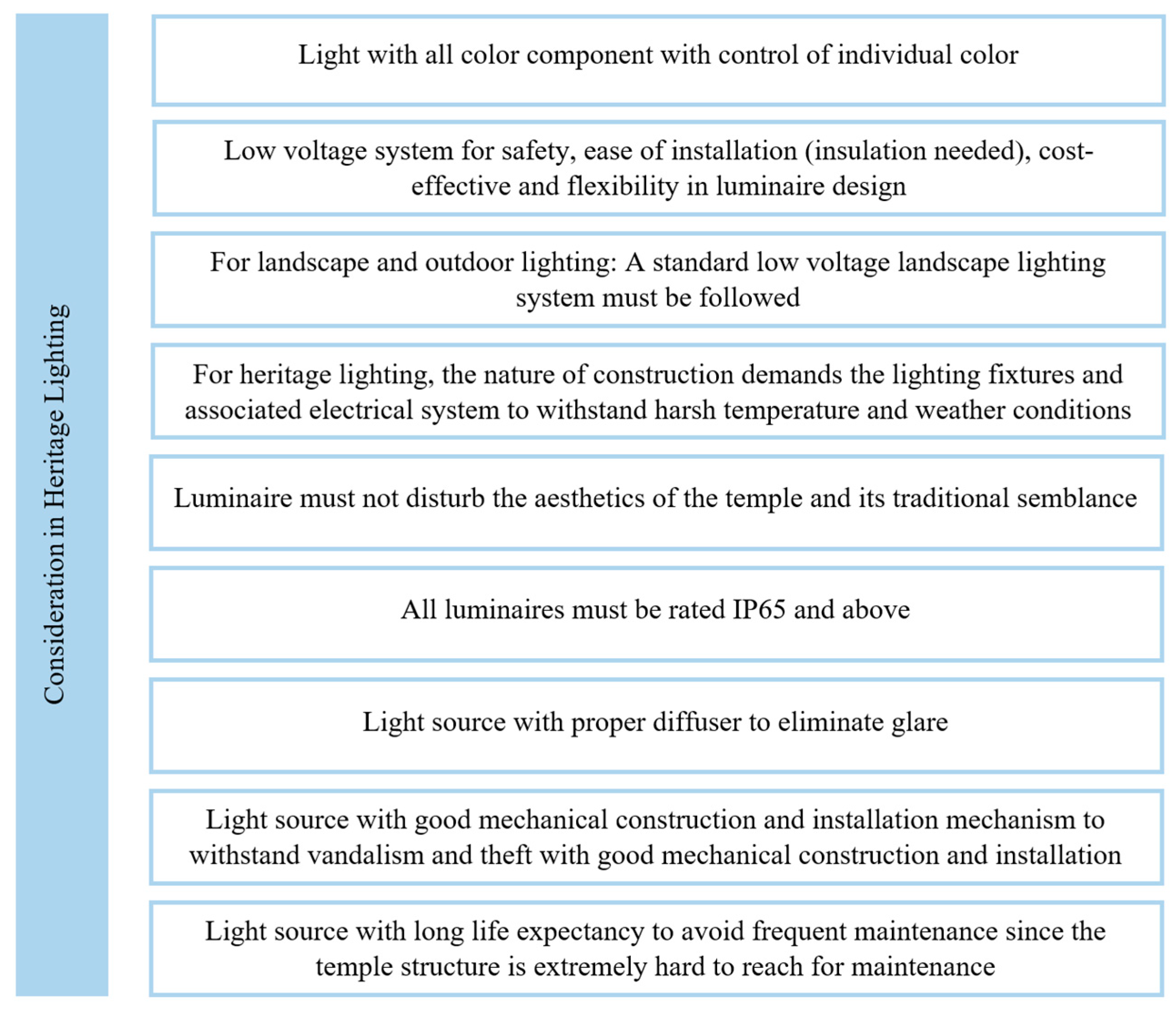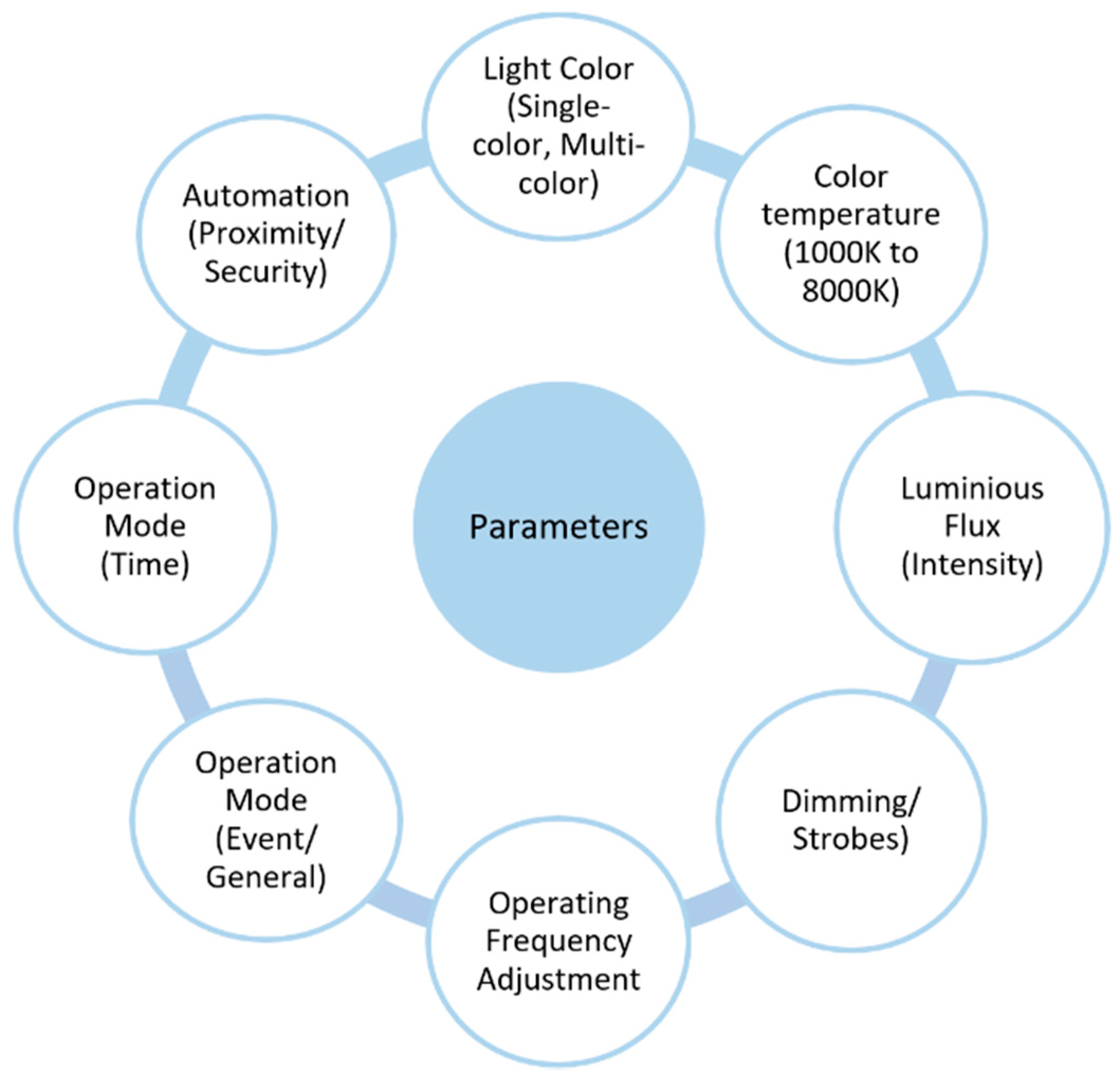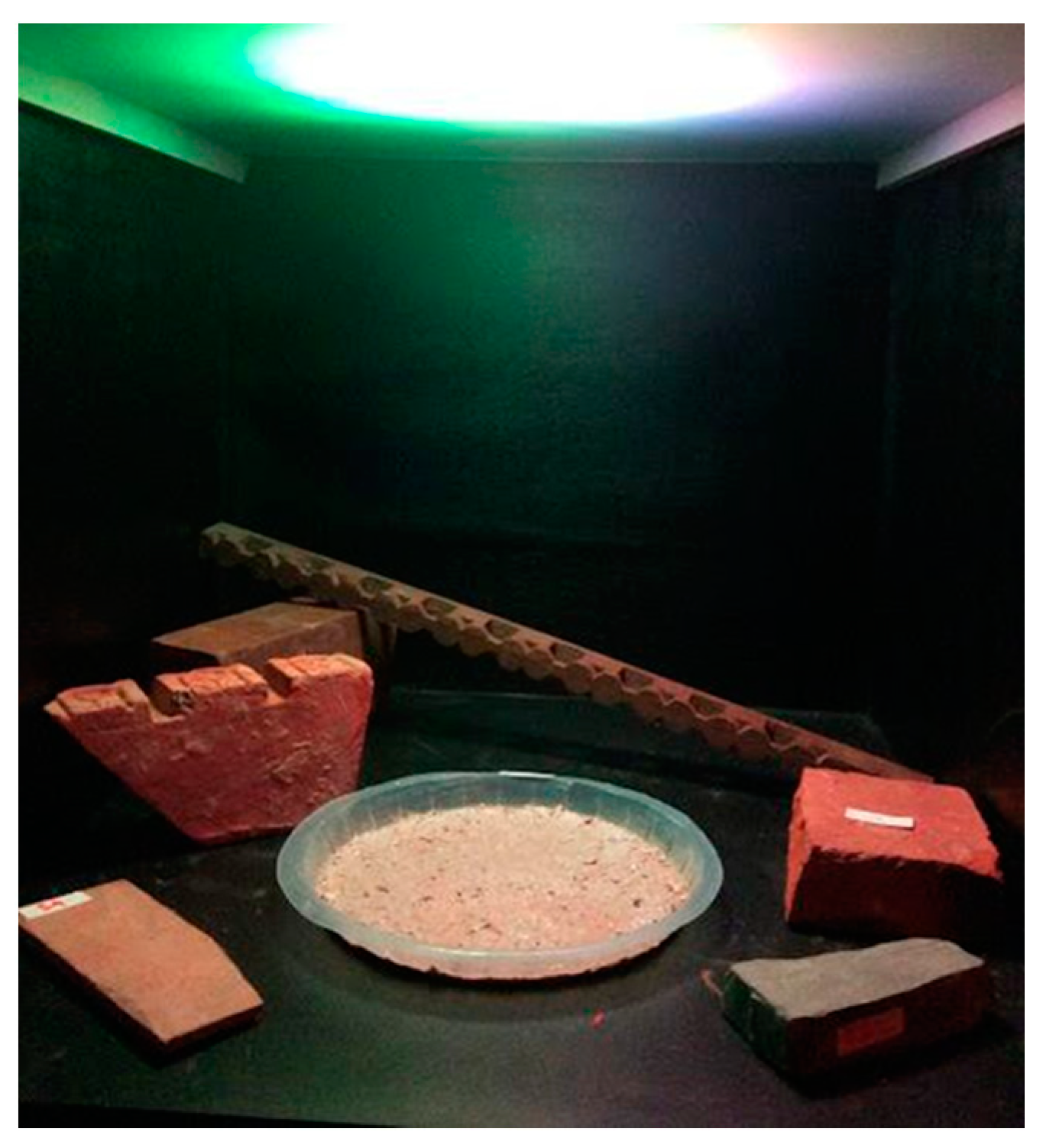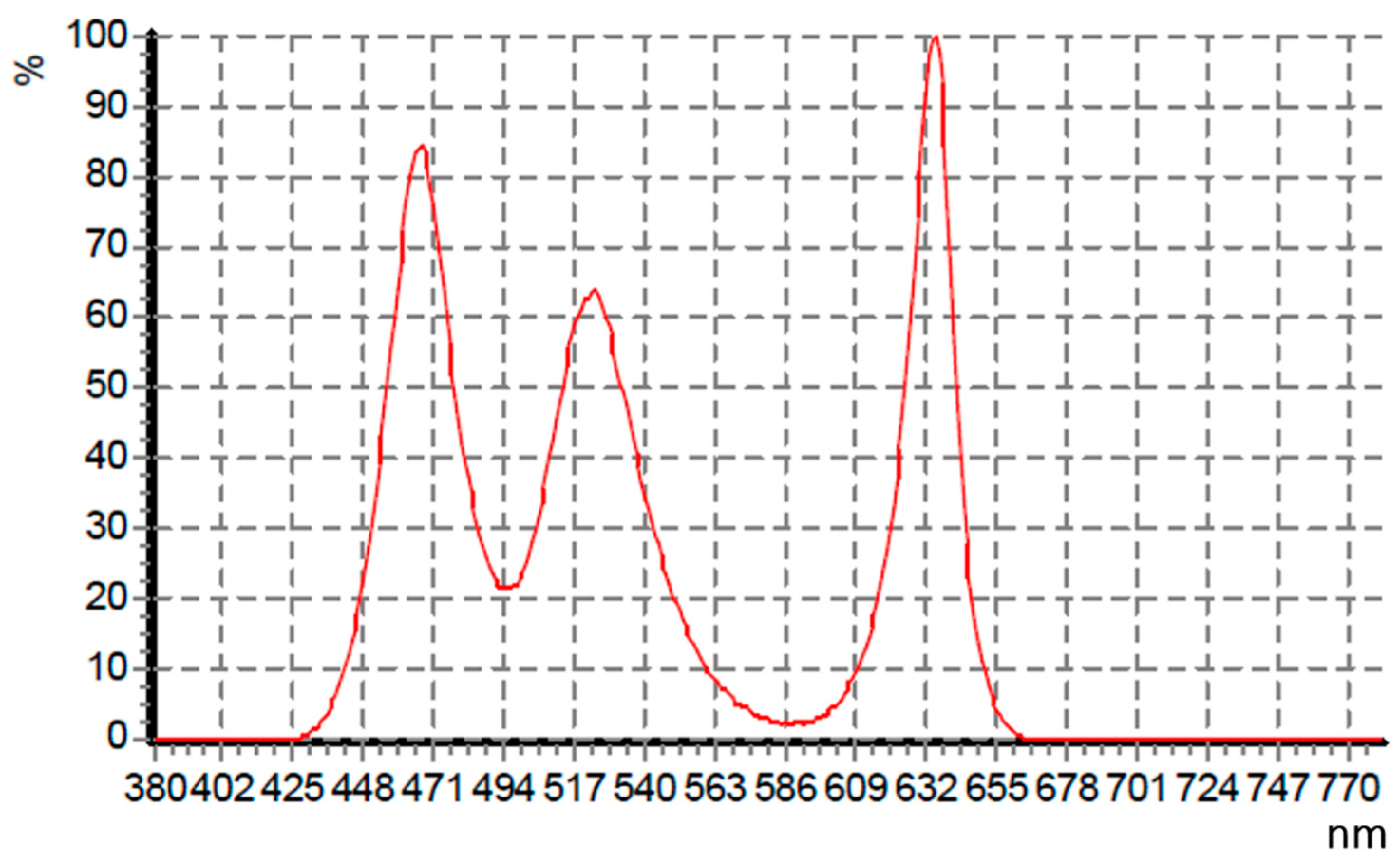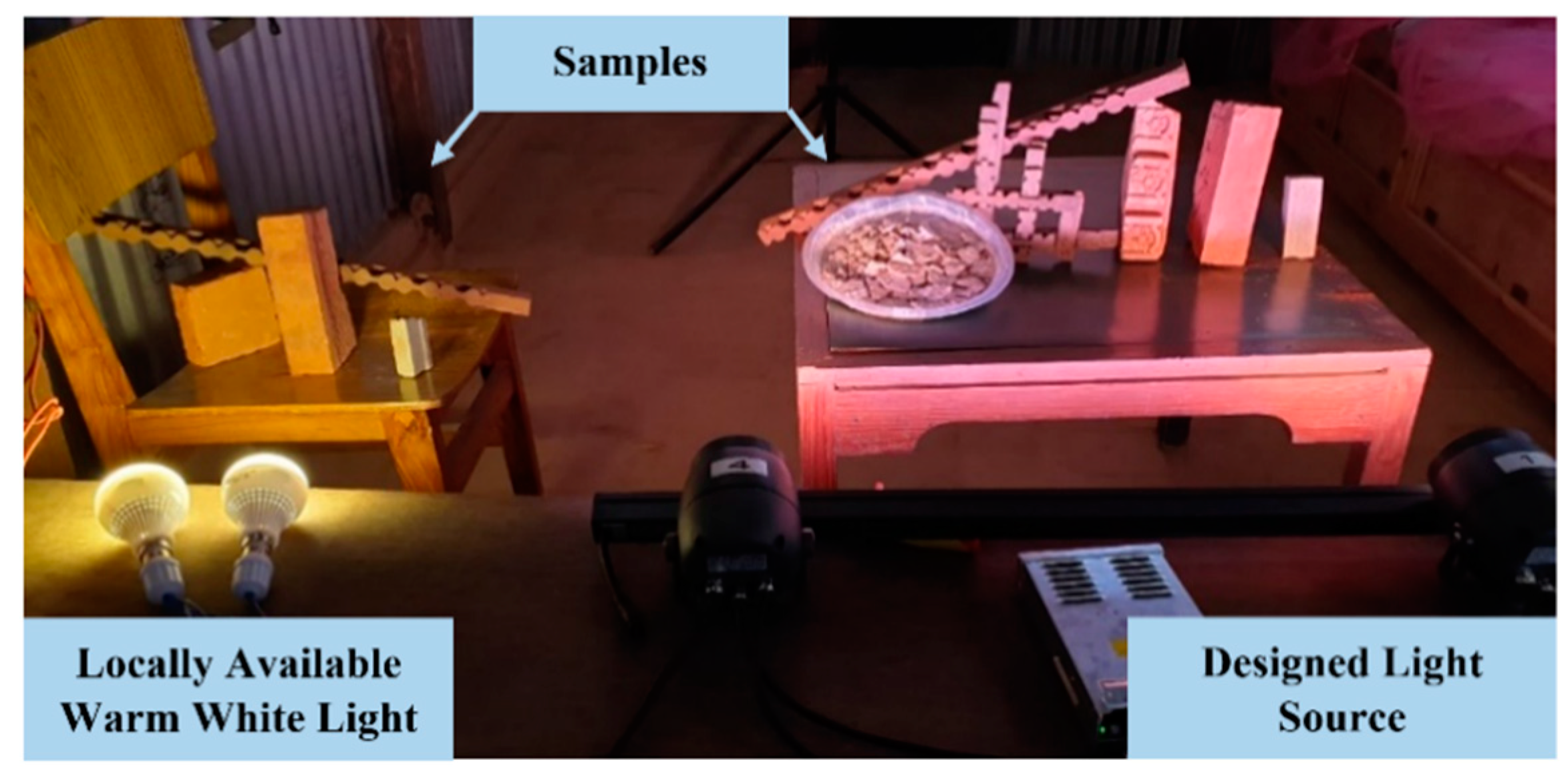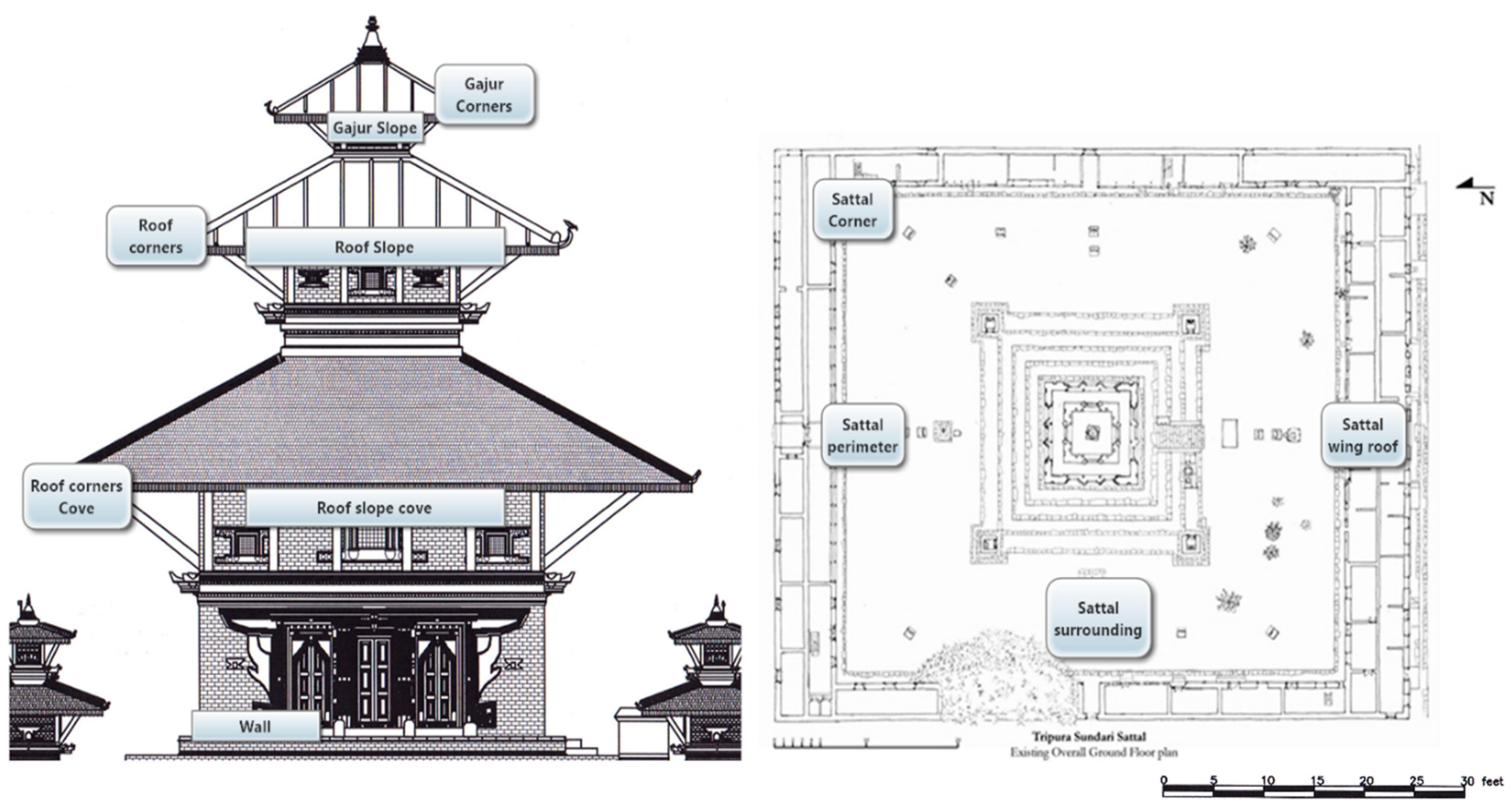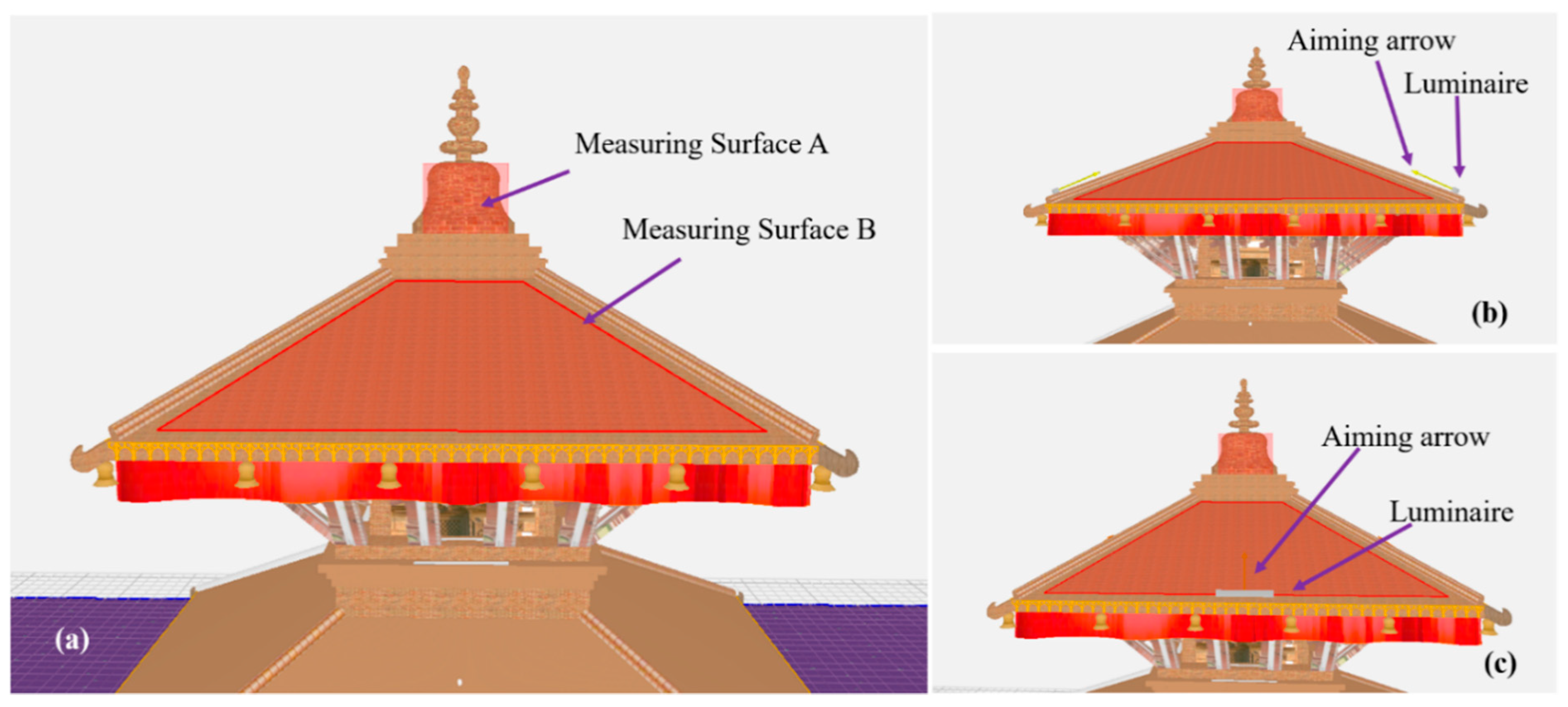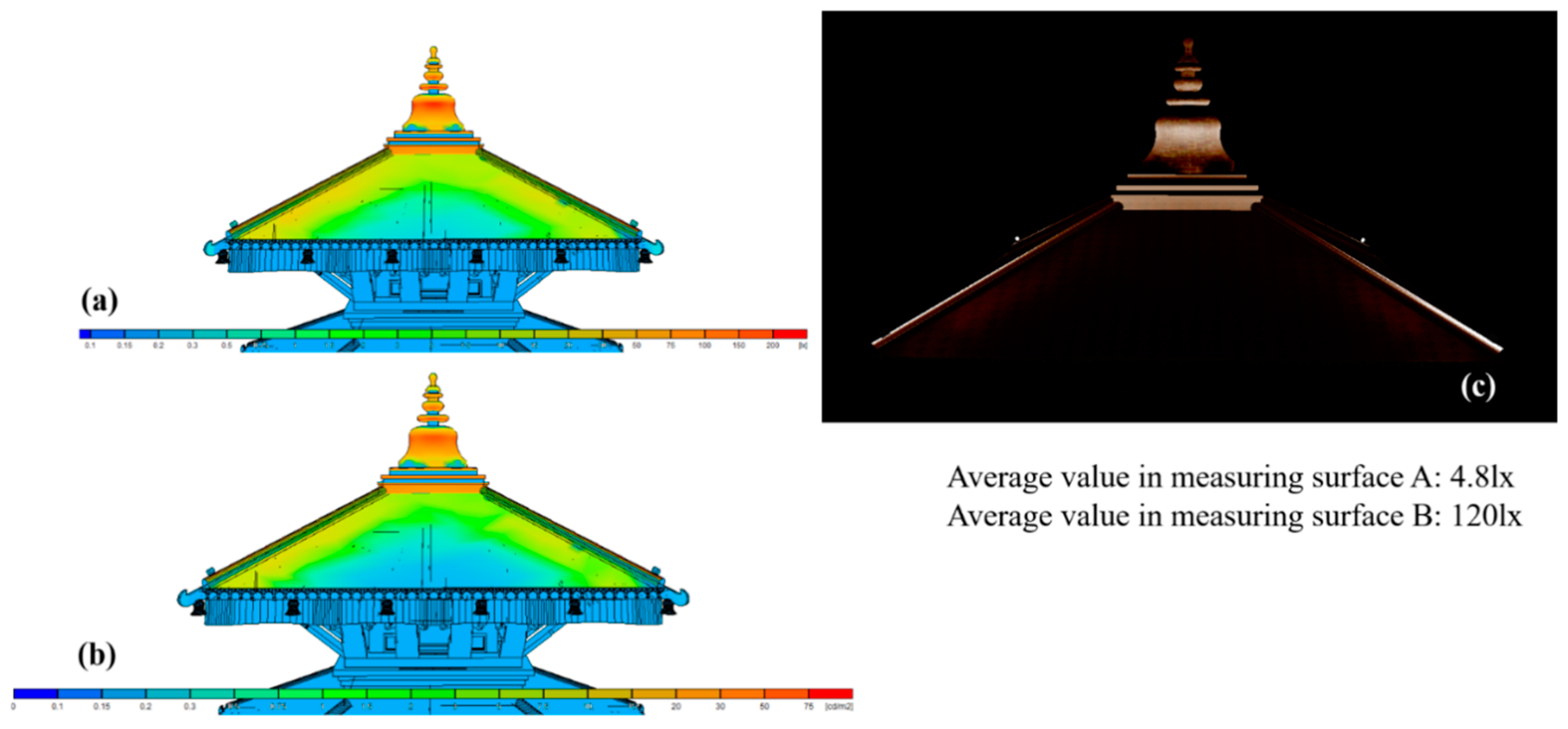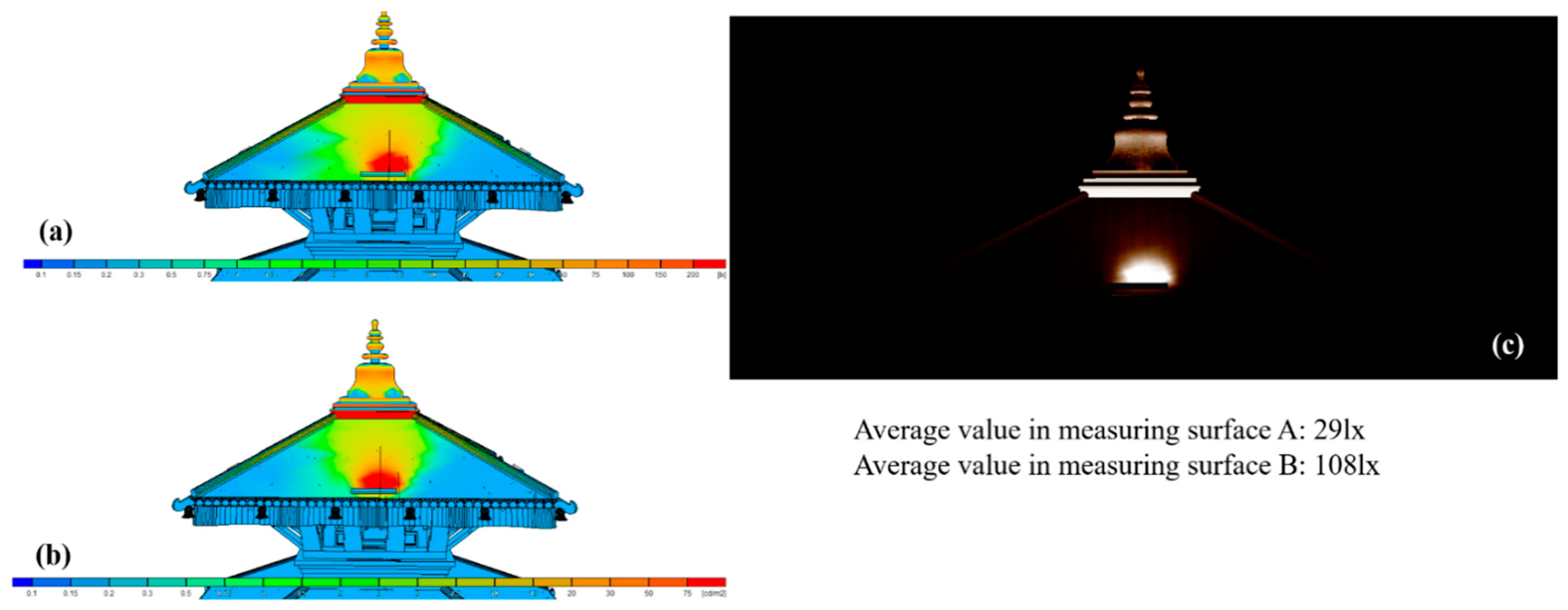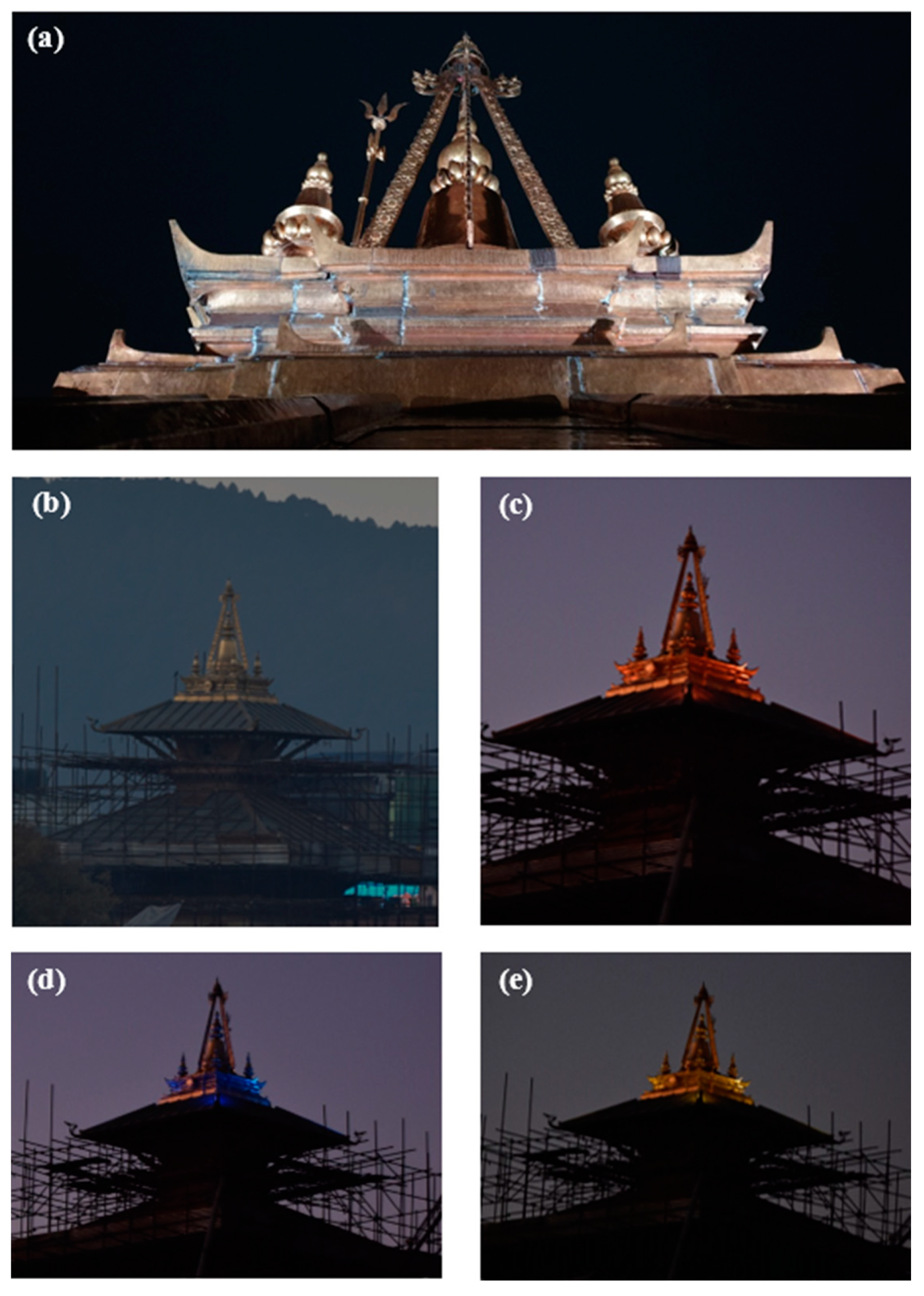1. Introduction
Nepal is not only the land of Himalayas but also holds many traditional cultural monument zones, which are also recognized as the United Nations World Heritage Sites (UNESCO). Capital of the country, Kathmandu Valley comprises seven monument zones recognized as UNESCO world heritage sites and several other monuments holding traditional and cultural values in the form of palaces and temples [
1]. With many historical monuments and temples, the valley area has also been described as the land of Gods. These monuments are based on traditional Nepalese architecture, also known as Bastukala in Nepali. In general, Nepalese architecture of cultural heritage especially temples and monastery can be categorized into the Pagoda style, Stupa style, and Shikha style.
The architectural and historical monuments are an important point of reference for the local population, increasing their sense of security, and acts as an important factor shaping social identity. These places also help to promote tourism, a major source of income for local communities. Nepal has a lot of ancient culture and heritage sites which attracts a hefty number of tourists every year, but as of now, in the absence of appropriate artificial lighting scheme, the tourism industry is limited only during the day. Lighting design is an important element in these places to hold the tourists during the night. These sites were primarily intended for daytime activities utilizing natural light, and a few night-time cultural events using wick lamp or controlled fire. For a few decades, these places have been gradually opened to local and global audiences and are being used for several other purposes than they were originally intended. Thus, these places demand the intervention of appropriate and scientific lighting practices that are in line with historic and cultural values. The heritage sites in Nepal are mostly constructed out of wood, brick, and stones with a unique architectural and construction approaches. In course of intervening lighting scheme in these places, preservation of historical values and substantial allure should be of prime concern. Lighting quality should not only be quantified by the technical data and standards but human cognition and perceptions of local residents and visitors. Moreover, tourists visit cultural and heritage sites for its natural beauty, social life, cultural activities, and in search of a place for mental peace [
2]. Thus, lighting is important not only to highlight the architecture but also to positively influence several activities in the vicinity.
In the past few years, various lighting design and approaches have been introduced to highlight and express the life of cultural and heritage sites within the country. Most of the cultural monuments are adopting artificial lighting technologies for their easiness to work during the night time [
3]. However, most of them are found to be equipped with improper light sources providing inadequate and inappropriate lighting, degrading the beauty and originality of monuments. The current illumination schemes are targeted to function as a security light and facilitate the mobility of people in the vicinity. Such an arrangement does not have any influence on highlighting the architecture, but instead create spill light, glare, over-illumination and many other factors contributing to light pollution [
4].
As for the other applications: street lighting [
5,
6], national parks [
7], landscape lighting [
8] there are much research works for minimizing the negative effects of spill lighting and light pollution, but for the architectural lighting and especially for traditional buildings there is lack of research work. Each tradition and the monument have their own uniqueness and originality. The Pagoda temples of Nepal had been made with their special architectural design and material types. Hence, it demands a special type of lighting approaches, which is found to be lagged in the current state. Special lighting approaches may incorporate a variety of light sources, control techniques, luminaire placement plans, etc., which are relevant to the architecture and the materials from which they are made, which can help to maintain and preserve the originality after the intervention.
Many cultural and heritage sites around the world are involved in the refurbishment of the lighting system with more smart and efficient lighting systems [
9]. New technologies like an integration of ICT (information and communication technology) [
10] are being integrated with lighting systems for achieving maximum efficiency and advanced control system of the lighting would also ensure the safety of the heritage site and the pedestrians. However, in the case of Nepal, the cultural and heritage sites are still in darkness with no proper infrastructure or planning of lighting systems. Most of the heritage sites are illuminated poorly without considering the cultural value of the site and safety of the visitors. The safety concerns of the heritage sites are increasing as the nightlife has started to boom in Nepal. With these increase, the number of tourists visiting at night has also increased abruptly in the past years which brings the need for appropriate lighting in these sites [
11]. This paper presents the lighting condition of cultural sites of Nepal and proposes a procedure for correctly designing lighting systems for these sites.
This paper discusses the status of lighting in heritage sites of Nepal in the present condition and provides recommendations of how artificial lighting can intervene in maintaining the aesthetics, cultural values, and originality of the site along with preserving energy and minimizing light pollution. The structure of this paper is as follow:
Section 1 presents the basic background on the topic area;
Section 2 discuss the methods, requirements, and the relevance of the lighting technologies in heritage site and lighting considerations in heritage; the status and malpractices of present lighting technologies in Nepalese temples are presented and discussed with detail comparison in
Section 3;
Section 4 presents the detailed method and their processes to identify the best lighting illumination for the particular monument. This section discusses the design preference, analysis preference, luminaire selection preference, and detailed plan of installation. The Tripureshwor Mahadev Temple Complex is considered as the case study to apply the identified illumination techniques and approach; outcomes of the experimental setup have been discussed in
Section 5, and the overall conclusion is presented in the last Section. Though described in detail in further chapters, the main contributions of this paper are related to the following:
- (a)
The actual lighting practices and current issues in Nepalese heritage site has been discussed in detail. The Nepalese Pagoda type architecture is the second oldest architecture in whole Asia and considered as one of the unique designs.
- (b)
An appropriate illumination has been proposed for the unique architecture and construction material of Nepalese Pagoda type temples. These monuments are mostly made of local types of wood, brick, stones, tiles, clay, chaku (a sweet made from hardened molasses), etc. For specific material types, a suitable illumination has been selected via a subjective preference approach.
- (c)
A recommendation of illumination scheme incorporating optical spectrum, control strategy, luminaire type, and placement etc., has been made for the case study of Tripureshwor Mahadev Temple Complex. The case site was constructed in the 19th century and based on the Pagoda architecture. Design and recommendations are based on the site requirement, architecture, construction material, and intended activities. Further, the recommendation is also backed up by laboratory testing and onsite observation and validation.
2. Methods
The intervention of artificial lighting in a heritage site is to create a fusion of modern design techniques and standards to ancient buildings and its overall space. As with the invention of fire more than one million years ago, humans have been using artificial light to illuminate space at night [
12]. The artificial light has been transitioned a lot from natural fire to candles then gas and now the most efficient electric lighting. Artificial lighting can be used in monumental places to show a much more unique and detailed architecture of the places in the absence of natural light. Even having rich architecture, the building outline, when viewed in daylight, can be less distinct, but at night, the light can be focused on the rich architecture by different measures like emphasizing in the elevations. Illuminating the building by the means of different directions of light allows creating a unique atmosphere, which can be formed by the lighting dynamics and light color [
13].
First, the need for lighting in the heritage site was identified and then different consideration to be taken while designing lighting were studied thoroughly. Temples from the different geographical area were studied to investigate general consideration, common and variable problems in lighting heritage sites in Nepal. For the case study, a temple which is under reconstruction in Kathmandu Valley was selected. An initial site survey was conducted in Tripureshowor Mahadev Temple with an objective to gather the information: (a) site location and daylight condition, (b) physical construction, (c) types of monuments and surrounding infrastructures, (d) nature of monuments and construction materials, (e) types of activities to be performed on the site, (f) technical and architectural limitation for installing artificial light source, (g) lighting preference of project team members (i.e., project manager, site engineer, architect), and (h) light pollution and glare to nearby surrounding and dwellers. Then the lighting scheme was designed, demonstrated and installed in a section of the temple (pinnacle). The lighting recommended were efficient with low glare, little to no spill light and was able to provide sufficient illumination.
2.1. Need and Relevance of Lighting in Heritage Sites
Lighting design is a thoughtful application of light source to get visibility and accomplish a specific task during the darkness by providing desirable illumination. In the present context, there are numerous light sources and lighting technologies. With the advancement of technologies, traditional lighting is being gradually replaced by efficient lighting system with specific application, characterization, and advantages. Application of lighting technologies in different provisions are identified and implemented successfully in various sectors, illumination of historical site and monuments being one of them. Nepal has a wide cultural and natural diversity that attracts tourists from all over the world, so one of the major contributors to Nepal’s economy is the tourism industry. Apart from international tourists, domestic tourism also contributes largely to the tourism associated economy. The major tourist attractions of Nepal are natural beauties, biodiversity, adventure activities, trekking and mountaineering in the mid-hill to high mountains, and diverse heritage areas present across the country. Focused on the heritage sites, the major cities of Nepal are extraordinarily rich and attract tourist from all over the world. Unfortunately, most of the tourist attractions or tourist residing vicinities seem to be improperly and inadequately illuminated. A landmark is an important part of any society as it acts as identification of the area. These landmarks and monuments need proper illumination, but in the present context, the landmarks and monuments in Nepal are not illuminated or illuminated improperly. Even in the important landmark and popular heritage sites, there is no proper lighting mechanism. This has hindered the heritages’ beauty and shortened the visiting duration of tourists. Some of the advantages of good heritage lighting for the country like Nepal are discussed below.
- (a)
Visual Perception: Eyesight and Vision account for two-third of the environmental information around us. After sunset, it is necessary for artificial lighting to maintain the visual perception of the environment. Presence of artificial light increases visual perception and vision during the night time [
14]. Visual perception is the means of appreciation of the value and memory of the artefacts, monuments, etc.
- (b)
Aesthetic: Artificial lighting not only helps in the vision at night but also increases the aesthetic of the illuminated object/place dramatically. A monument or space can be made dynamic with different types of lighting schemes [
15]. For example, in
Section 3.2, an improved aesthetic at Patan Durbar Square through the application of artificial lighting has been described.
- (c)
Security: Artificial lighting is intended to enhance safety and security at night. Heritage site and monuments being a treasure of priceless objects, security is crucial in these sites. For people and visitors, proper illumination helps to observe the different situations of the environment and give time to react to any danger nearby. Light in dark alley or corridor also increases a sense of safety and security.
- (d)
Local Vendor Empowerment: Lighting gives more time for business to open and especially in a heritage site, this added time leads to increase of business to local vendors who sell souvenir, local foods, and many more local products. Increase in sales also leads to making the place famous for local products.
- (e)
Quality of Life: With the increment in leisure hours and facilities for leisure activities, improvement in the quality of life can be anticipated. People of different age group will have more time and space to carry out recreational activities.
- (f)
Economic Growth: With the expansion of different business and vendors, benefits are realized not only by the local community, but significant contribution can be added to the country’s economy. With the enhancement of tourist destinations and increment of activity hours, overall development of the nation’s tourism industry and economic benefits can be anticipated. Similar benefits can also be observed concerning domestic tourism.
- (g)
Environment-Friendly Lighting: LED lighting provides a better advantage in going eco-friendly as this technology allows the user to change different parameters according to the needs. The color temperature, lumen output, beam angle can be varied according to need. These options bring possibilities to design a lighting scheme that addresses the surrounding nature, the habitat and the people’s need too [
16]. Oil-based wick-lamps had been used for centuries for artificial lighting, but they do not provide sufficient lighting and used oil as fuel which creates different types of fumes [
17,
18]. These fumes as well as heat generated from the lamp Detroit the nearby environment and also create the risk of fire hazard in places like a temple where woods are used. Using energy-efficient LED light sources also decreases the amount of energy needed and contributes to reduce carbon emission [
19].
2.2. Lighting Considerations in Cultural and Heritage Sites
Heritage site includes a variety of building materials which have very unique features that resemble its importance and its history. These archaeological sites include different layer and types of soil, bricks, stones, old wooden textures, and many other materials which makes the sites unique as compared to other buildings in general. Lighting in these sites thus requires proper understanding of the materials that are used in the construction of the sites [
20,
21]. Heritage and cultural sites generally include temple, mosques, and churches, where light is considered to symbolize a triumph of good over bad. Candles and oil wick lamps are generally lit in these places to worship. People take the lighting in these places seriously from a spiritual and conservational perspective. These places must be first categorized by their usage, architecture and the key aspects that make them attractive and unique to visitors.
Basically, the lighting need depends on the architecture, environment, the ethnic group, and geographical region of the site. However, in case of heritage sites, there are many factors which must be considered such as the purpose of the site, usability time and scale, number of people visiting, and the spiritual perspective of the visitors to the place. With the technological advancement and modernization into action, the old methods to light up at night are being gradually replaced and up-graded towards efficient and effective technologies. Thus, the lighting must be adequate, spiritually acceptable, and aesthetic along with added protection from heat or fire damage. Some of the considerations to be made in heritage lighting are discussed below:
- (a)
Location: One of the important factors to be considered while lighting is the location of the heritage site. The illumination level and position of light depend upon the location and the usage of the site. Location of the site determines the level of spill light allowance in the nearby properties, the mounting height for luminaries, and the type of fixtures. If the heritage site has residential area nearby (within 10 m), the spill light must be controlled along with cut-off or semi cut-off of lights at midnight or after the closure of businesses nearby [
22]. Similarly, the location determines the level of security lighting needed for night time in the area. If the heritage sites comprise of park or other social activities infrastructure in its territory, the lighting of these territories must be done separately considering the environmental factors.
- (b)
Architecture: Lighting in a heritage site must always correlate with the architecture of the heritage site. The lighting fixtures must not be disturbing or ruining the original architecture. It can highlight or ruin monuments in the heritage site; thus, the designing, location of a fixture, color temperature and illuminance level must be in coordination with the architecture. The light from one monument should not spill into another by creating light pollution or shadowing effect [
22].
- (c)
Position of the lighting fixtures: Luminaries must be positioned in such a way that they are concealed and do not affect the historic value of the heritage site. A lighting layout may produce a charismatic effect at night but can make daytime visual direful. If a luminaire affects the daytime view of the historic site, then the lighting scheme is considered to be a failure. The position of the luminaires must be located on nearby buildings, trees, or any nearby suitable structure where it is not affecting the site permanently. Suitable design of the lighting infrastructure, it is aiming not only reduces the energy waste but also helps to avoid oversized lighting system [
23]. The position of luminaires must also consider the maintenance of luminaires.
- (d)
Maintenance: Lighting systems must be serviced regularly, and this must be allowed for at the design stage. Depreciation in illumination, caused by dirt on lamps, luminaires and room surfaces, should be controlled by regular cleaning to maintain the required illuminance levels must be considered while designing and the frequency and period must be defined. When a lamp fails, its replacement must be done, but, in case of a heritage site, the luminaire can be out of reach for general maintenance, so the place where the luminaire is to be fixed must be considered and light fixtures with longer life expectancy must be chosen [
9].
- (e)
Light pollution: With the advancement of efficient LED lights, the city area and heritage sites are flooded with lighting installations in recent years. Thus many countries are now interested in the prevention and control of light pollution in an urban environment [
24,
25]. The government has recommended nominal use of floodlighting in heritage sites along with recommendation on using lights with a blue light filter. It is also recommended to use light with color temperature less than 3000 K with an assumption that the light spectrum below 500 nm disturbs the night-life (bats, moths, and insects) [
5,
26]. Outdoor lighting at night time attracts insects which may also damage the surface of the ancient monuments [
27].
- (f)
Energy Efficiency in historical buildings: Various research has been conducted concerning the energy performance of the historic building [
28,
29,
30,
31,
32] indicating its important role. Although no regulations force the historical sites to undergo energy transformation if these sites are not reformed, many places do not tend to meet the objectives set out in terms of the environment [
32]. Efficient lighting can save a significant amount of energy and resources, reduce carbon emission and increase the comfort level. Heritage sites sometimes can be flooded with excess energy inputs of heat or light which not only consume excess energy but also leads to degradation of the ancient monuments.
Existing lighting systems in most of the heritage sites use incandescent halogen lamp or compact fluorescent lamp (CFL) placed poorly, which causes high demand of energy, a lot of glare to visitors and at the same time do not produce homogeneous illumination. The existing systems produce many patches of high intensity and many places are left with dark spots. Use of LED lights decreases the energy demand and wall washers produce homogeneous illumination in the heritage sites. Use of efficient light: LED also does not detract from the artworks as they do not emit invisible ranges of the electromagnetic spectrum [
33]. Furthermore, economic savings obtained from the reduction of energy consumption would save in public resources and can be used for other activities [
23].
- (a)
Emergency and Security: Places that are open to the public are always in a high-risk zone in case of any emergency. Lighting system equipped with a backup power source should be added along with primary light source to mitigate risk arising due to power failure. These lights also provide security in case of vandalism or security threat. Further, photo-luminescent safety signage is required that glows when a change of normal lighting conditions must be installed in the public spaces [
34].
3. Lighting Malpractices in Nepalese Heritage (Temple) Sites
Geographically, Nepal is divided into three sections: The Himalayas, the Hilly, and the Terai (lowland region). The altitude in these region ranges from as low as 59 m in tropical Terai to 8848 m in the Himalayas. As much as the geography of the country varies, the culture, heritage, and living style varies among the people. It can find the chortens, stupas and as we move down, we can find Pagoda-style architectures and further south we can find temples influenced by different Indian tradition and styles. Though the design and material of the heritage sites seem similar, a drastic difference in environmental condition makes designing and implementation of lighting schemes different in different topographical location. The people in different areas have different ways of worship and different religious belief; thus, their needs, as well as problem, differ. Thus, the design and recommendation of lighting scheme differ in different geographical regions. In this Section, some of the temples in different geographical regions are studied and evaluated for problem identification.
3.1. Lighting Malpractices in Temples of Terai Region
Kali Mandir (Temple) is one of the oldest temples of Biratnagar which is incredibly famous in the region and has its own importance among the pilgrims. This temple receives pilgrims throughout the year from early in the morning (4 a.m.) to late night (12 a.m.), which shows the necessity of artificial light for night-time. However, due to inadequate and improper lighting, the temple is not as bewitching as in the daytime.
Figure 1 shows the Kali Mandir during the daytime and at night.
Table 1 presents the problems identified in this temple during the site visit and through the interview with local residents.
3.2. Lighting Malpractices in Heritage Temples in Kathmandu Valley
Although Pagoda-type architecture dates back to fifth century, one of the oldest Pagoda style architecture in the world [
35], the Nepalese Pagoda (multi-tiered roofed) temples boomed as a monument for religious and spiritual activities during the Malla Dynasty (1200–1768). Most of the monuments in Nepal consist of different tiered roof temples, pati, sattal, monasteries, dhungedhara, chaityas, viharas, stupas, etc., and traditional private houses (different palaces now under UNESCO world heritage sites) belonged to the Malla Kings of the medieval period. Each type of structure has its own distinctive character and utility but is linked with one another by common ties of construction technique and materials [
36]. As seen in different heritage sites around the world, cultural heritage sites were seen as a place that should never be changed, but with time as the sites were getting old, redefinition and restoration of the heritage sites were gaining popularity in the late 20th century and at the beginning of 21st century [
37,
38]. Although, these restoration projects begun at early 21st century in rest of the world, Nepal has begun the restoration works only after the 2015 Gorkha Nepal earthquake which affected as many as 745 monuments in 20 districts of Nepal [
39]. The reconstruction work is ongoing, which will also help in adding new technology of lighting to the heritage sites.
Figure 2 shows the lighting scheme at Patan Durbar Square installed after the reconstruction work completed.
Nepal consists of heritage sites, landmarks, and monuments along with natural diversity throughout the country. Though these heritage sites are open 24 h to the public, but they are full of tourists during the daytime, it gets deserted at night due to insufficient and inadequate lighting. There are no lighting mechanisms or policies to light up and boost tourism during night time [
3]. If the heritage sites were properly and adequately illuminated, the visiting hours, local businesses, economy, and tourism can be increased dramatically during the night-time.
Figure 3a shows crowded people at Bhaktapur Durbar square and empty due to improper lighting and lack of evening time tourism.
Alongside the visibility issues for dwellers and tourists, there are numerous unsafe and unscientific approaches being practiced in these sites. Use of traditional oil wick lamp for the workshop and decorative lighting is culturally valuable but if used inappropriately it can turn out to be is unsafe approaches for such structure. The residue of such lamps has an adverse effect on the aesthetics and damage the structure and valuable artefacts.
Figure 3e,f demonstrates such practices and its consequence. Similarly, random placement of modern light source of improper photometric and colorimetric properties (usage of light spectrum rich in blue component, aiming lighting fixtures above the horizon) without proper design and calculations has diminished the values of the heritage site and has also brought negative effects like light pollution and glare to visitors and local dwellers.
Figure 3c,d demonstrates such unscientific and unplanned lighting approach. However, lighting systems and techniques implemented in these sites do have several issues and are highlighted in
Table 2.
4. Results
4.1. Lighting for Pagoda Style Temple: Case Study of Tripureshwor Mahadev Temple Complex
One of the important aspects of artificial lighting is human perception. The light projected on an object should be able to mimic natural light (sunlight) and in tandem should also be comfortable to the human eye. In some cases, where beautification of an object is required, the projected light may not mimic natural color but may boost some color components to enhance the appearance of the subject. For example, the red component of a light source may be boosted to enhance the appearance of brick used in the temple. Lighting fixture and luminaire should not spoil the aesthetics of site but at the same time should be durable and easy to maintain. Planning of electrical layout and implementation of appropriate lighting scheme is an important step for all residential and commercial construction. Especially, this becomes even more important for heritage site where light plays a crucial rule to enhance the ambience, highlight important aspects, preservation of artefacts, provide visual comfort, security, etc. Traditional construction materials are used in the heritage site, and this demands coordination between luminance characteristic of the material and light that is projected on the subject. Further, in illuminating a heritage site, the requirements and constraints associated with the object and the observer must be considered. Lighting with suitable light spectral composition and correct levels of illuminance must satisfy the subjective viewing conditions, such as color rendering and the observer’s comfort. When designing a space, it must be taken into account that it is through a light that we reveal the architectural spaces, their forms, their proportions, and their textures and colors.
The historic buildings and monuments are often amazing feats of architecture and engineering. Many have been enhanced and brought to life at night-time with striking and subtle external lighting schemes. Some, however, have produced far more negative results by highlighting flaws and views of the structure never meant to be seen. Lighting plays a significant role in developing interaction between humans and heritage site artefacts in one defined space.
4.2. Site Location
The Tripureshwor Mahadev Temple complex is located at the Tripureshwor is one of the important historical sites of Kathmandu. It was destroyed by the 25 April 2015 earthquake and following aftershocks. Built-in 1818 AD by Queen Lalita Tripura Sundari in the memory of King Rana Bahadur Shah, the Shivalaya complex features a three-story temple, one of the biggest temples built during the Shah Dynasty, as well as sattals and a garden. At the center of the temple complex lies the main shrine, a three-tiered Pagoda structure. The complex is founded on a Panchayan Plan, where Panchayan means worship of five Gods, among them, the Shiva (name of the God) takes the central position surrounded by four demigods. The principal temple base is set on four decreasing brick platform and in the corners of the second platform, four small two-tiered temples are placed. These subsidiary temples house the divinities, Ganesh, Vishnu, Surya, and Bhagwati representing Shiva’s special attendants. The shrine consists of the outer wall with the triple doorway on all four sides, opening into a circumambulatory path enclosing the inner sacred sanctum with four single doorways in a cardinal direction.
The temple complex is framed within double-story sattal wings. The Tripureshwor Mahadev Temple, Sattals, and Garden area shown in
Figure 4 is being rebuilt to its former glory by the Department of Music, Kathmandu University, and will also be maintained by the department to revive the local music traditions and to revitalize the rituals and customs of the Shivalaya.
4.3. Adopted Research Approaches and the Outcomes
The lighting design was done and installed in a section of the temple (Gajur or golden pinnacle in the top) by considering the unique nature of the site, construction material used, and the aesthetic values. Design of lighting scheme and electric layout was carried out in multiple phases. First, the area requiring artificial light and areas that must be hidden must be identified. The lighting scheme must be able to promote observation and experience of the site against the night sky. Light is an important factor at night as it adds an important dimension which will enhance the key architectural elements along with its social and historical significance. Light also affects the nocturnal environment as it promotes safety. The lighting design also enhances night-time orientation and use which also promotes night-time activity. Lighting also enhances prominent features, contour, and adds a dimension to space without a large amount of light and spill light. Hence, considering these things, the following steps had been adopted during this research work.
4.3.1. Sample Collection
Installing an exterior landscape or monument lighting system is a great way to add beauty, curb appeal, and safety to building exterior, garden, walkway, entrance, etc. Improper lighting or lighting that is not in line with the nature of the site, on the contrary, will create unappealing ambience [
40]. Especially for heritage site like Tripurasundari temple, a study of luminance and color property of construction materials is particularly important in the selection of appropriate spectrum of an artificial light source. If construction materials are studied and their luminance characteristic is studied, a light spectrum that can increase the naturalness of the object being lighted can be recommended. Similarly, if an object is to be decorated, we can also determine the light color or mixture of color required to increase the beauty of the object without diminishing natural appeal.
To study the characteristics of construction material, some of the major components used especially in the outer surface of the temple were considered. As shown in
Figure 5, the samples were mortar (a mixture of sand, calcium hydroxide and brick powder), stone, wood “agrakh”, brick (different types of fire clay brick), and tile.
4.3.2. Selection of Materials
Selection of materials (luminaire, and controller) was done based on the experimental result and standard practices. Major points considered for the selection of light source are presented in
Figure 6. These considerations are also recommended for lighting in heritage sites where bricks, wood, and stone are used as a construction material. These considerations can also be used for outdoor and nightscape lighting.
Similarly, the luminaire connection layout has been planned based on DMX (Digital Multiplex) controller’s specifications. Luminaires should be compatible with DMX controller and should have built-in communication unit for coordination with DMX controller. All luminaires connected to a single DMX controller should be in a series configuration. Several luminaires in series were connected as per the specification of DMX controller. If luminaire to be connected in series exceeds the specification, a signal booster can be inserted in between the series connection. The connection layout for linking DMX controller, luminaire, signal booster, and power supply is shown in
Figure 7. Luminaires of connection in series can be of different types but should be equipped with the same type of DMX communication and control unit [
41].
4.3.3. Light Source Experiment with Different Spectrum
All luminaires connected to DMX controller can be set to operate independently. The operating parameters can be set or later adjusted based on the initial configuration. Some of the key adjustable parameters as per design are given in
Figure 8. Programming of the DMX controller was carried out using software (Simple LED V2103 for Windows) provided by the manufacturer (Beijing Mingrui Light Technology Co., Ltd. Beijing). For the control of color temperature, luminaires are programmed to achieve the required color temperature by increasing or decreasing the intensity of red, blue, green, and white LEDs. Reference of color temperature and the corresponding color that were tested in the laboratory are presented in
Table 3. Although white stones were enhanced with blueish light (CCT > 7000 K), considering light pollution it was decided to use light with CCT 5500 K or below [
42].
4.3.4. Subjective Preference Analysis
Construction materials used in the heritage sites of Nepal are unique in nature and their response to a different spectrum of light has yet not been studied. This study was particularly important to know the luminance of material, when subjected to a different spectrum of light. So, this study was intended to gather the opinion of people towards the visual ambience of sample object when they were illuminated by different types (spectrum and intensity) of light sources as done in other researches [
43,
44].
To conduct the experimental analysis, test lamps (light sources) were custom build and were designed in a way that all component of color (Red, Green, and Blue) could be individually controlled. The light source was versatile enough to produce any spectrum within the visible spectrum. Various materials were examined under various light sources and the visual light sources were investigated by users with the use of questionnaires. All the samples were kept under light sources under a different category of the spectrum as shown in
Figure 9.
A survey was conducted where participants were allowed to observe the object under different lighting conditions and fill the questionnaire according to their preference. The individual evaluation referred to viewing a single booth at a time and rating the lit environment in that booth by putting a mark on a continuous line scale in the questionnaires. The individual evaluation questions were related to naturalness and beauty in the visual appearance of the selected seven objects. The comparison evaluation was performed by evaluating the lit scenes under a light source where observers compare and rate the naturalness of objects and the overall preferences of the lit scenes. The chosen spectrum of the light is shown in
Figure 10 and the qualitative results from the analysis are presented in
Table 4.
Overall, the white light consisting of all the components Red, Green, and Blue is preferred for the components of the heritage site as it will show its true color. Depending on the type of object, Red and Blue component of the light source can be increased or decreased to enhance the beauty of the object by making the light source warmer or cooler. The main point to be considered is that the white light created for the experiment consisted of all color components thus offered good color rendition (Ra > 80), so the object viewed under the light was observed naturally. On the contrary, if white light source like phosphor-converted white LED (Light Emitting Diode), fluorescent, etc., with the same value of color temperature but with low color rendering index is used, then the natural color of the object cannot be achieved.
4.3.5. On-Site Demonstration
After completion of subjective preference, selection of luminaire and programming of the controller, on-site demonstration was carried out. The demonstration was intended to differentiate luminance of construction materials when projected with warm white LED light source available in the market and designed light source as shown in
Figure 11. This showed the major difference in the color of the object when illuminated by readily available lights from the market without any design considerations and designed lights. It can be clearly seen that the materials (bricks, wood, mortar, and stone) look faded with the ordinary light source while the same object looks more vivid and realistic with recommended light sources. The samples that were illuminated were the same (Mortar, brick, wood, and stones).
4.3.6. Luminaire Installation Plan
The placement plan for the luminaire had been accomplished based on the experiment result and standard practices for monument lighting, outdoor lighting, landscape lighting, security lighting, and museum and art gallery lighting. The presented design is a recommendation based on the general standards and considerations presented in
Section 4.3.7 and can be adjusted as per needs. The design recommendation has considered the architecture of the temple made available by the reconstruction project team.
Table 5 shows the recommended lighting scheme for various location of the heritage site.
For the ease of realizing design, the temple structure has been subdivided into different section and luminaire placement scheme for each section is recommended accordingly.
Figure 12 shows a subdivision of major areas and their recommended lighting scheme based on the architectural layout of the temple as shown in
Table 6. The temple complex was categorized into different divisions based on the architecture, their usage, and their significance due to religious belief or architecture. Different lighting scheme has also been recommended for different location and points. Further, primary and secondary luminary has been suggested for the temple area.
4.3.7. Simulation of the Model
The design of the lighting system was realized by the use of lighting simulation software. The test simulations were performed using the Relux simulation tool [
46] as was used in previous studies [
6,
47,
48,
49,
50]. Two measuring surfaces: Measuring Surface A and Measuring Surface B and two scenarios were taken into consideration as shown in
Figure 13 The luminaires were well hidden in the architecture such that it does not affect the temple architecture. The average illuminance value with floodlights at measuring surface A was 4.8lx and at measuring surface B was 120lx with floodlights.
Figure 14 shows the false color rendition and real color rendition simulated in Relux software with floodlights. Similarly, with the wall washer lights kept at the slope had 29lx at measuring surface A and 108lx at measuring surface B.
Figure 15 shows the false color rendition and real color rendition simulated in Relux software with wall washer. The calculated illuminance values were at 100% of the luminaries’ light output. The luminaires installed are dimmable and the luminous flux will be adjusted to lower values in order to have a lower impact on the light pollution. Further, the lights will be dimmed and/or turned off according to the local laws and regulations during curfew hours.
4.3.8. Light Fine Tuning and Testing
For fine-tuning of design and testing of luminaire and controller, site validation was carried out for the Gajur section of the temple. The installation was based on recommendation illumination scheme and used spotlight and wall washer lights. For testing purpose, the controller was programmed for obtaining white light with various color temperature as well as various monochromatic color. The installation of luminaire was carried out by a lighting design team in coordination with the project team. Obtained illumination from site testing was in line with the design. Very less variance in average and peak illumination was observed. Object illuminated was observed in its natural color and no glare was observed from ground level. Illumination distribution was concentrated on the subject with less amount of light spilling sideways and toward the sky.
Figure 16a shows the final light installed in the Gajur section of the temple and
Figure 16b–e shows different phases while installing the light fixtures.
Figure 16d,e shows some of the color options that were discarded after discussions with architecture and from a cultural point of view, it was recommended not to use lights other than white light for illuminating the temple area.
5. Discussion
Artificial lighting has become an integral part of the modern world. Lighting is even important for the heritage site, monument, and temple to augment its exposure to the local as well as the global audience. Nepal being affluent in cultural heritage and simultaneously destitute in the illumination of these sites, the scientific and pertinent intervention of artificial lighting will reinforce the tourism and will bring numerous health, social, cultural, and economic benefits to the society as well as the Nation. Ample shortcomings were identified from the current practices of heritage lighting, and most of these can be easily mitigated utilizing current technology and resources. In this study, the design of the lighting system is based on specialized LED luminaires. The construction material and physical structure of these luminaires refute the ambience of the site. Unless the luminaries are hidden from the visual field, it will have a negative impact on aesthetics. Manufacturing luminaire through locally available traditional materials and structural design will be a better option for integrating luminaire in the structure of heritage sites.
Based on architecture and construction materials, the heritage sites in Nepal are unique. The materials used for the construction demands specific nature of light spectrum for enriching its magnificence. Further, traditional architecture, monument and structure mandate specific types of luminaires for obtaining the desired level of illumination without affecting the aesthetics and traditional appearance. These conditions demand illumination standards and guidelines specifically formulated for heritage sites. In absence of local guidelines, it is hard to implement scientific lighting for a heritage site in Nepal. The lighting design for Tripureshwor Mahadev temple presented in this paper has addressed key pinpointed issues associated with lighting for the heritage sites in Nepal. The dynamic nature of the system allows lighting scheme to be programmed in accordance with application, event, location, and ambience. Social and health issues related to light spillage and glare has also been mitigated to a greater extent. Use of highly efficient and long-life LED, and low voltage operation offers energy efficiency, reliability and safety in the precious places.
For the historic monuments and buildings, the resource materials and the views must be incorporated with as much sensitivity to the original and traditional aspects. Hence there are numerous limitations in up-gradation and feature addition works. Inclusion of lighting prospects in such area has big challenges, among which the protection of the system, as well as the human life from the probable faults, are the major one. Generally, the problems that may occur in the lighting of such area are faults because of switching surge, insulation failure, equipotentialization bonding, etc. Since the roof of the temple is made of highly conducting materials, the temperature will be very high, which may result in the insulation break of the wires and cables used for power supply. Similarly, the whole system might be damaged by a small fault within the system. Such type of fault can be dangerous to the public around the area and the visitors as well. On the other hand, lightning is one of the unavoidable and unpredictable natural phenomena that may result in a thoughtful threat to tall structures like a tower, tall building, ancient monuments, etc. Historic data provides a clear picture of the potential risk of lightening on temples and historic places containing huge amount of conducting materials at the top of the structure (i.e., Gajur in Nepalese temples). Damage of historic properties from lightning strikes are found to have occurred in a few places of Nepal as well. Pratapur temple, located at Swayambhu monument zone, is an example of the affected heritage building from a lightning strike. Further, it is known that the Kathmandu valley, including Kathmandu, Lalitpur, and Bhaktapur districts, is in the danger zone for lighting strokes, since the maximum positive lighting strokes recorded is above average for these areas. In present practices, different types of lightning protection systems (LPS) and earthing protection systems are being used to protect the monuments from different faults and to reduce the probability of being damaged. The proper earthing (body as well as the system) is considered to be an effective and economic one. Similarly, the lighting system at low voltage (DC) is preferable for landscape and highly risked area.
6. Conclusions and Recommendation
With a change in the environment, the living styles, and standard of the people in that environment change. Depending upon the situation of the city, its infrastructures, cultural diversity and religious values, change in the development process must be made. Standards and recommendation for preserving and unleashing the beauty of cultural and heritage sites should be made and implemented. In this paper, the authors present a deep analysis of the malpractices in the lighting of the ancient building of Nepal. After the detailed study of the malpractices, an innovative way of lighting has been proposed, investigated, and tested in a case study. The developed approach has been selected via a subjective preference approach. From this study, it is concluded that the present practice of lighting of the heritage site in Nepal needs to be monitored and standardized. Furthermore, in the current scenario, the actual data of cultural and heritage site, their religious importance, and study on the importance of integrating modern tools in ancient monuments must be done. Similarly, a local governing body must take an action for preserving, promoting and generating revenue from the heritage site that falls under their area. Hence based on this study, some recommendation has been made and listed in
Table 7. These recommendations are specifically targeted at the Nepalese heritage side. However, this type of analysis and procedures can be practiced and implemented on the other side of the world, although the environment, construction materials, and religious beliefs and importance may vary.
Author Contributions
Conceptualization, D.B. and B.B.C.; methodology, D.B., P.B., G.Z., F.T. and B.B.C.; software, D.B., A.B. and L.T.D.; validation, D.B., P.B., L.T.D., G.Z., F.T. and B.B.C.; formal analysis, D.B., A.B., A.S., L.T.D., investigation, D.B., A.B., A.S., L.T.D.; resources, D.B. and L.T.D., writing—original draft preparation, All; writing—review and editing, All. All authors have read and agreed to the published version of the manuscript.
Funding
The research was funded by Center of Electrical Power Engineering Project (CEPE), Kathmandu University.
Institutional Review Board Statement
Not applicable.
Informed Consent Statement
Not applicable.
Data Availability Statement
The authors confirm that the data supporting the findings of this study are available within the article.
Acknowledgments
This study was conducted at the Center for Electric Power Engineering (CEPE), Kathmandu University, Nepal, under the support of EnergizeNepal Project Office (Project ID: ENEP-CEPE-18-01-001). The author/s would like to thank the Department of Music, Kathmandu University for the support and cooperation during this study. The author/s are also thankful for the technical resources and construction workers, who were working on the reconstruction work of Tripureshwor Mahadev temple complex.
Conflicts of Interest
The authors declare no conflict of interest.
References
- United Nations Educational, Scientific and Cultural Organization, Kathmandu Valley. Available online: https://whc.unesco.org/en/list/121/ (accessed on 22 November 2020).
- Oyman, M.; Yilmaz, H.; Kutlu, O. Motivations for Visiting Heritage Sites: The Case of Eskisehir. Int. J. Humanit. Annu. Rev. 2010, 8, 131–144. [Google Scholar] [CrossRef]
- Bista, D.; Shrestha, A.; Zissis, G.; Bhusal, P.; Topalis, F.V.; Chhetri, B.B. Status of Lighting Technologies in Nepal. Light Eng. 2019, 27, 4–15. [Google Scholar] [CrossRef]
- Zielinska-Dabkowska, K.M.; Xavia, K.; Bobkowska, K. Assessment of Citizens’ Actions against Light Pollution with Guidelines for Future Initiatives. Sustainability 2020, 12, 4997. [Google Scholar] [CrossRef]
- Donatello, S.; Quintero, R.R.; Caldas, M.G.; Wolf, O.; Van Tichelen, P.; Van Hoof, V. Revision of the EU Green Public Procurement Criteria for Road Lighting and Traffic Signals; Technical report and criteria proposal; Publications Office of the European Union: Luxembourg, 2019. [Google Scholar]
- Doulos, L.T.; Sioutis, I.; Kontaxis, P.; Zissis, G.; Faidas, K. A decision support system for assessment of street lighting tenders based on energy performance indicators and environmental criteria: Overview, methodology and case study. Sustain. Cities Soc. 2019, 51, 101759. [Google Scholar] [CrossRef]
- Papalambrou, A.; Doulos, L.T. Identifying, Examining, and Planning Areas Protected from Light Pollution. The Case Study of Planning the First National Dark Sky Park in Greece. Sustainability 2019, 11, 5963. [Google Scholar] [CrossRef]
- Pollard, N.E.; Van Bommel, W.; Diaz Castro, J.; Lecocq, J.; Pong, B.-J.; Walkling, A. Guide on the Limitation of the Effects of Obtrusive Light from Outdoor Lighting Installations, 2nd ed.; Technical Report; COMMISSION INTERNATIONALE DE L’ECLAIRAGE, CIE Central Bureau: Vienna, Austria, 2017. [Google Scholar]
- Salata, F.; Golasi, I.; Falanga, G.; Allegri, M.; Vollaro, E.D.L.; Nardecchia, F.; Pagliaro, F.; Gugliermetti, F.; Vollaro, A.D.L. Maintenance and Energy Optimization of Lighting Systems for the Improvement of Historic Buildings: A Case Study. Sustainability 2015, 7, 10770–10788. [Google Scholar] [CrossRef]
- Beccali, M.; Bonomolo, M.; Galatioto, A.; Pulvirenti, E. Smart lighting in a historic context: A case study. Manag. Environ. Qual. Int. J. 2017, 28, 282–298. [Google Scholar] [CrossRef]
- Chitrakar, A. Nepali Times, Nepal by Night. Available online: https://www.nepalitimes.com/opinion/nepal-by-night (accessed on 8 February 2020).
- Williams, B. A History of Light and Lighting. 1999. Available online: https://lightingtrainer.com/basics/lighting-library/ (accessed on 24 December 2020).
- Carlevaris-Bianco, N.; Eustice, R.M. Learning visual feature descriptors for dynamic lighting conditions. In Proceedings of the 2014 IEEE/RSJ International Conference on Intelligent Robots and Systems, Chicago, IL, USA, 14–18 September 2014; IEEE: Danvers, MA, USA, 2014; pp. 2769–2776. [Google Scholar]
- Rozman Cafuta, M. Visual perception and evaluation of artificial night light in urban open areas. Informatologia 2014, 47, 257–263. [Google Scholar]
- Żagan, W.; Skarżyński, K. The “layered method”—A third method of floodlighting. Light. Res. Technol. 2020, 52, 641–653. [Google Scholar] [CrossRef]
- Moretti, L.; Cantisani, G.; Carrarini, L.; Bezzi, F.; Cherubini, V.; Nicotra, S. Italian Road Tunnels: Economic and Environmental Effects of an On-Going Project to Reduce Lighting Consumption. Sustainability 2019, 11, 4631. [Google Scholar] [CrossRef]
- Moullou, D.; Doulos, L.T.; Topalis, F.V. Artificial Light Sources in Roman, Byzantine, and Post-Byzantine Eras: An Evaluation of their Performance. Chronos-Rev. Hist. Univ. Balamand 2015, 32, 119–132. [Google Scholar]
- Moullou, D.; Madias, E.-N.D.; Doulos, L.T.; Bouroussis, C.A.; Topalis, F.V. Lighting in antiquity. Balkan Light 2012, 3–5, 237–244. [Google Scholar]
- Riyanto, I.; Margatama, L.; Suparmoko, M.; Martini, M.; Hindarto, D.E. University contribution in developing country on carbon emission reduction through motion sensor application pilot project on building lighting installation. In Proceedings of the 2018 IEEE International Conference on Applied System Invention (ICASI), Chiba, Japan, 13–17 April 2018; IEEE: Danvers, MA, USA, 2018; pp. 558–561. [Google Scholar]
- Hasenöhrl, U. Lighting Conflicts from a Historical Perspective. Urban Lighting, Light Pollution, and Society; Routledge: New York, NY, USA, 2014; pp. 105–124. [Google Scholar]
- Di Salvo, S. Innovation in lighting for enhancing the appreciation and preservation of archaeological heritage. J. Cult. Heritage 2014, 15, 209–212. [Google Scholar] [CrossRef]
- Code Publishing Company. The Pinal County Development Services Code. Available online: https://www.codepublishing.com/AZ/PinalCounty/html/PinalCounty02/PinalCounty02195.html#2.195.040 (accessed on 12 November 2020).
- Leccese, F.; Lista, D.; Salvadori, G.; Beccali, M.; Bonomolo, M. On the Applicability of the Space Syntax Methodology for the Determination of Street Lighting Classes. Energies 2020, 13, 1476. [Google Scholar] [CrossRef]
- Pollard, N. Guide on the Limitation of the Effects of Obtrusive Light from Outdoor Lighting Installations. Symp.-Int. Astron. Union 2001, 196, 77–80. [Google Scholar] [CrossRef]
- Guanglei, W.; Ngarambe, J.; Kim, G. A Comparative Study on Current Outdoor Lighting Policies in China and Korea: A Step toward a Sustainable Nighttime Environment. Sustainability 2019, 11, 3989. [Google Scholar] [CrossRef]
- Mohar, A.; Zagmajster, M.; Verovnik, R.; Skaberne, B.B. Nature-Friendlier Lighting of Objects of Cultural Heritage (churches): Recommendations. Available online: http://temnonebo.com/images/pdf/nature_friendler_lightning_churces_booklet_web.pdf (accessed on 28 October 2020).
- Teacă, C.A.; Roşu, D.; Bodîrlău, R.; Roşu, L. Structural Changes in Wood under Artificial UV Light Irradiation Determined by FTIR Spectroscopy and Color Measurements—A Brief Review. Bioresources 2012, 8, 1478–1507. [Google Scholar] [CrossRef]
- Salvadori, G.; Maccheroni, D.; Tambellini, G. Sustainable lighting for cultural heritage: A pilot study for evaluating the exhibits’ display inside historical buildings. IOP Conf. Ser. Mater. Sci. Eng. 2020, 949, 012019. [Google Scholar] [CrossRef]
- Leccese, F.; Salvadori, G.; Maccheroni, D.; Feltrin, F. Lighting and visual experience of artworks: Results of a study campaign at the National Museum of San Matteo in Pisa, Italy. J. Cult. Herit. 2020, 45, 254–264. [Google Scholar] [CrossRef]
- Lo Faro, A.; Miceli, A. Sustainable Strategies for the Adaptive Reuse of Religious Heritage: A Social Opportunity. Buildings 2019, 9, 211. [Google Scholar] [CrossRef]
- Moschella, A.; Salemi, A.; Lo Faro, A.; Sanfilippo, G.; Detommaso, M.; Privitera, A. Historic Buildings in Mediterranean Area and Solar Thermal Technologies: Architectural Integration vs Preservation Criteria. Energy Procedia 2013, 42, 416–425. [Google Scholar] [CrossRef]
- Etxepare, L.; Leon, I.; Sagarna, M.; Lizundia, I.; Uranga, E.J. Advanced Intervention Protocol in the Energy Rehabilitation of Heritage Buildings: A Miñones Barracks Case Study. Sustainability 2020, 12, 6270. [Google Scholar] [CrossRef]
- Troi, A. Comfort and Energy Efficiency in Historic Buildings–the 3ENCULT Experience. Energy Effic. Comf. Hist. Build. 2016, 10–16. [Google Scholar]
- Salleh, N.H.; Ahmad, A.G. Fire safety management in heritage buildings: The current scenario in Malaysia. In Proceedings of the 22nd CIPA Symposium, CIPA, Kyoto, Japan, 11–15 October 2009; pp. 4–6. [Google Scholar]
- Pradhan, R. Historical background of the Kathmandu world heritage sites with special reference to Patan monument zone. Ancient Nepal 1996, 139, 49–59. [Google Scholar]
- Shakya, M.; Varum, H.; Vicente, R.; Costa, A. Structural vulnerability of Nepalese Pagoda temples. In Proceedings of the 15th World Conference on Earthquake Engineering, Lisbon, Portugal, 24–28 September 2012; Sociedade Portuguesa de Engenharia Sismica: Lisbon, Portugal, 2012; pp. 24–28. [Google Scholar]
- Sowińska-Heim, J. Adaptive Reuse of Architectural Heritage and Its Role in the Post-Disaster Reconstruction of Urban Identity: Post-Communist Łódź. Sustainability 2020, 12, 8054. [Google Scholar] [CrossRef]
- International Council on Monuments and Sites, “European Charter of the Architectural Heritage—1975,” 11 November 2011. Available online: https://www.icomos.org/en/charters-and-texts/179-articles-en-francais/ressources/charters-and-standards/170-european-charter-of-the-architectural-heritage (accessed on 4 November 2020).
- Apil, K.; Sharma, K.; Pokharel, B. Reconstruction of heritage structures in Nepal after 2015 Gorkha, Nepal earthquake. In Proceedings of the 12th Canadian Conference on Earthquake Engineering, Quebec, QC, Canada, 17–20 June 2019; The Canadian Association for Earthquake Engineering: Vancouver, BC, Canada, 2019; pp. 17–20. [Google Scholar]
- Zielinska-Dabkowska, K.M.; Xavia, K. Historic Urban Settings, LED Illumination and its Impact on Nighttime Perception, Visual Appearance, and Cultural Heritage Identity. In Proceedings of the 5th International Multidisciplinary Scientific Conference on Social Sciences and Arts, Florence, Italy, 23–26 October 2018; SGEM: Sofia, Bulgaria, 2018; pp. 277–291. [Google Scholar]
- Bista, A.; Khadka, N.; Shrestha, A.; Bista, D. Importance of Efficient Lighting Control Techniques in Illumination Design: A Review. In Proceedings of the RESSD 2020 International Conference on Role of Energy for Sustainable Social Development in ‘New Normal’ Era, Kathmandu, Nepal, 28–29 December 2020; IEEE PES Nepal Chapter: Kathmandu, Nepal, 2020. [Google Scholar]
- Espey, B. Public Lighting Recommendations. Available online: http://www.tara.tcd.ie/bitstream/handle/2262/91582/Lighting_guidelines_13Feb2020.pdf?sequence=1 (accessed on 30 November 2020).
- Dangol, R.; Islam, M.; LiSc, M.H.; Bhusal, P.; Puolakka, M.; Halonen, L. Subjective preferences and colour quality metrics of LED light sources. Light. Res. Technol. 2013, 45, 666–688. [Google Scholar] [CrossRef]
- Baniya, R.R.; Tetri, E.; Halonen, L. A study of preferred illuminance and correlated colour temperature for LED office lighting. Light Eng. 2015, 23, 39–47. [Google Scholar]
- European Committee for Standardization. Light and Lighting—Lighting of Work Places—Part 1: Indoor Work Places. Available online: https://docplayer.net/20856763-En12464-1-2011-light-and-lighting-lighting-of-workplaces-part-1-indoor-work-places-head-of-strategic-lighting-applications.html (accessed on 5 December 2020).
- RELUX Lighting Simulation Tool. Available online: https://reluxnet.relux.com/en/ (accessed on 8 February 2021).
- Ardavani, O.; Zerefos, S.; Doulos, L.T. Redesigning the exterior lighting as part of the urban landscape: The role of transgenic bioluminescent plants in mediterranean urban and suburban lighting environments. J. Clean. Prod. 2020, 242, 118477. [Google Scholar] [CrossRef]
- Yu, X.; Su, Y.; Chen, X. Application of RELUX simulation to investigate energy saving potential from daylighting in a new educational building in UK. Energy Build. 2014, 74, 191–202. [Google Scholar] [CrossRef]
- Doulos, L.T.; Kontadakis, A.; Madias, E.N.; Sinou, M.; Tsangrassoulis, A. Minimizing energy consumption for artificial lighting in a typical classroom of a Hellenic public school aiming for near Zero Energy Building using LED DC luminaires and daylight harvesting systems. Energy Build. 2019, 194, 201–217. [Google Scholar] [CrossRef]
- Doulos, L.T.; Sioutis, I.; Tsangrassoulis, A.; Canale, L.; Faidas, K. Revision of Threshold Luminance Levels in Tunnels Aiming to Minimize Energy Consumption at No Cost: Methodology and Case Studies. Energies 2020, 13, 1707. [Google Scholar] [CrossRef]
Figure 1.
Kali Mandir (Temple) Biratnagar during daytime (a) and night-time (b).
Figure 1.
Kali Mandir (Temple) Biratnagar during daytime (a) and night-time (b).
Figure 2.
New lighting scheme at Patan Durbar Square after the reconstruction (Image was taken on 21 January 2020).
Figure 2.
New lighting scheme at Patan Durbar Square after the reconstruction (Image was taken on 21 January 2020).
Figure 3.
Bhaktapur Durbar Square during daytime and night-time (a) and (b), unsafe and unscientific lighting approach (c–f) (Image was taken on 21 January 2020 and 16 October 2020).
Figure 3.
Bhaktapur Durbar Square during daytime and night-time (a) and (b), unsafe and unscientific lighting approach (c–f) (Image was taken on 21 January 2020 and 16 October 2020).
Figure 4.
Ongoing Reconstruction of Tripureshwor Mahadev temple.
Figure 4.
Ongoing Reconstruction of Tripureshwor Mahadev temple.
Figure 5.
Samples from the temple: (a) Mortar (b) Stone (c) Brick type 1 (d) Brick type 2 (e) Brick type 3 (f) Wood.
Figure 5.
Samples from the temple: (a) Mortar (b) Stone (c) Brick type 1 (d) Brick type 2 (e) Brick type 3 (f) Wood.
Figure 6.
General recommendations for considerations in buildings in Nepal.
Figure 6.
General recommendations for considerations in buildings in Nepal.
Figure 7.
Schematic for connecting Digital Multiplex (DMX) controller, luminaire, signal booster, and power supply.
Figure 7.
Schematic for connecting Digital Multiplex (DMX) controller, luminaire, signal booster, and power supply.
Figure 8.
Key adjustment parameters.
Figure 8.
Key adjustment parameters.
Figure 9.
Experimental setup of samples for subjective preference.
Figure 9.
Experimental setup of samples for subjective preference.
Figure 10.
Spectrum of the chosen lamp.
Figure 10.
Spectrum of the chosen lamp.
Figure 11.
Demonstration of lights in the selected heritage site.
Figure 11.
Demonstration of lights in the selected heritage site.
Figure 12.
Subdivision of area for luminaire placement.
Figure 12.
Subdivision of area for luminaire placement.
Figure 13.
3D rendering of the temple in Relux software showing: (a) measuring surface A and B (b) luminaire placement and aiming direction of flood light and (c) luminaire placement and aiming direction of wall washer.
Figure 13.
3D rendering of the temple in Relux software showing: (a) measuring surface A and B (b) luminaire placement and aiming direction of flood light and (c) luminaire placement and aiming direction of wall washer.
Figure 14.
3D rendering of the temple in Relux software showing false color renditions (a) and (b), and real color rendition (c) with floodlights.
Figure 14.
3D rendering of the temple in Relux software showing false color renditions (a) and (b), and real color rendition (c) with floodlights.
Figure 15.
3D rendering of the temple in Relux software showing false color renditions (a) and (b), and real color rendition (c) with wall washer.
Figure 15.
3D rendering of the temple in Relux software showing false color renditions (a) and (b), and real color rendition (c) with wall washer.
Figure 16.
Image of the temple after site testing: (a) Recommended lighting scheme, (b) At dusk, and (c–e) discarded schemes.
Figure 16.
Image of the temple after site testing: (a) Recommended lighting scheme, (b) At dusk, and (c–e) discarded schemes.
Table 1.
Lighting malpractices in Kali Mandir (Terai Region).
Table 1.
Lighting malpractices in Kali Mandir (Terai Region).
| Problem | Description/effect |
|---|
| Insufficient and uneven illumination distribution | - -
Dark Spots in different places - -
Low level of illuminance in stairway and corridor (less than 10 lux in most of the places)
|
| Luminaire placement and mounting structure | - -
Formation of shadow due to the presence of objects and monuments in between the light source and active area. - -
A high value of unified glare rating in active areas where rituals are performed - -
Glare issue to people and locality surrounding the vicinity.
|
| Obsolete (in developed countries) lighting fixtures | - -
Use of inefficient and conventional light source (Incandescent lamp) in and around temple premises
|
| Spectrum of Luminous source | - -
The attraction of insects nearby to the light source due to usage of light with a higher proportion of shorter wavelength spectrum.
|
| Light pollution from nearby buildings | - -
This temple lies at the center of the city, thus the excess lights from nearby buildings distorts the night perception of the temple.
|
Table 2.
Lighting malpractices in the Pagoda type temples (Kathmandu valley).
Table 2.
Lighting malpractices in the Pagoda type temples (Kathmandu valley).
| Problem | Description/Effects |
|---|
| Insufficient and uneven illumination distribution | - -
Low illuminance level for observation of artefacts and structures. - -
An area with numerous dark spots with little or no light in adjacent areas - -
Light distribution pattern of luminaire not following the application. - -
Inconsistency due to less number and oversized luminaire.
|
| Luminaire placement and orientation | - -
Diminishing the values and originality of structure and monuments - -
Light pollution and glare - -
Mounting structure and luminaire construction not in line with the theme of the vicinity/structure. - -
Electrical and ambient safety compromised.
|
| Obsolete (in developed countries) lighting fixtures | - -
Use of inefficient and conventional light sources (Incandescent light sources) - -
Luminaire selection not inline to compensate for environmental effect and lamp dirt depreciation. - -
Use of incandescent lamp creating irreversible damage to the artefacts.
|
| Spectrum of the luminous source | - -
Use of low CRI phosphor-converted warm LED light creating the misleading and unpleasing impression of artefacts and monuments. - -
Inconsistency in the selection of luminaire color temperature.
|
| Use of traditional lighting techniques | - -
Remains of oil wick lam and controlled fire if not managed appropriately crating adverse effect on aesthetics and spotlessness. - -
Temporary and permanent damage to the structure due to thermal conduction and IR radiation from the fire if not managed properly. - -
Smoke from the remains creating a daunting effect on the structure and human health.
|
Table 3.
Color temperature and recommendation for different construction material.
Table 3.
Color temperature and recommendation for different construction material.
| S.N | Temperature | Color | Recommendation |
|---|
| 1 | 1000 K | | |
| 2 | 1500 K | | Carved Wood |
| 3 | 2000 K | | Mortar |
| 4 | 2500 K | |
| 5 | 3000 K | | |
| 6 | 3500 K | | Bricks and tiles |
| 7 | 4000 K | | |
| 8 | 4500 K | | |
| 9 | 5000 K | | |
| 10 | 5500 K | | Stone |
| 11 | 6000 K | | |
| 12 | 6500 K | | |
| 13 | 7000 K | | |
| 14 | 7500 K | | ** White Stone |
| 15 | 8000 K | |
| 16 | Pure White | | |
Table 4.
Survey Responses on different types of light source and samples.
Table 4.
Survey Responses on different types of light source and samples.
| Sample No. | Sample Type | Participant Answer | Description |
|---|
| a | Mortar | - -
Observers found the sample enhanced under cool light. Observers found the sample to look natural under neutral white.
| - -
Blue component of the spectrum can be increased in white light to make the sample look more beautiful.
|
| b | Stone | - -
Observers found the sample enhanced under cool light and natural under white light.
| - -
Blue component of the spectrum can be increased in the white light to increase beauty.
|
| c, d, and e | Bricks and Tiles | - -
Observers found tiles and bricks were enhanced under red and natural under white light.
| - -
By increasing the red component, the light source can be made warmer to increase the beauty of bricks and tiles.
|
| f | Woods | - -
Observers found the sample enhanced under red light and natural on white light.
| - -
Red spectrum of the light source can be increased to make it warmer to increase the beauty and naturalness of woods.
|
Table 5.
Recommended lighting location for various location [
45].
Table 5.
Recommended lighting location for various location [
45].
| S.N | Lighting Scheme | Luminaries |
|---|
| 1. | Up lighting for directional viewing | Spot (beam angle < 45°), accent lights, floodlights, and wall lights |
| 2. | Up lighting for 360-degree viewing | Floodlights (beam angle > 40°), and wall lights |
| 3. | Silhouette lighting | Well lights, spot/accent lights, wall wash lights (beam angle: 85°–120°) |
| 4. | Shadowing | Spotlights, Well lights, Floodlights |
| 5. | Spotlighting | Floodlights, spotlight |
| 6. | Spread lighting | Post light |
| 7. | Washing | Wall washer, floodlight |
Table 6.
Luminaire placement plan.
Table 6.
Luminaire placement plan.
| Location/Point | Primary Luminary | Secondary Luminary | Lighting Scheme |
|---|
| Gajur corners | Spotlight | NA | Up lighting for directional viewing |
| Gajur slope | Wall washer | LED strip light | Washing |
| Roof corners | Floodlight | Spotlight | Up lighting for directional viewing |
| Roof slope | Wall washer | LED strip light and spotlight | Washing |
| Roof corner cove | Wall washer | Spotlight | UP/Down lighting for directional viewing and washing |
| Roof slope cove | Wall washer | Spotlight | Washing |
| Sattal corner | Floodlight | Post light | Spread lighting |
| Sattal surrounding | Wall light and post light | Spotlight | Up lighting for 360° viewing and spread lighting |
| Sattal perimeter | Floodlight | Spotlight | Up lighting for 360° viewing and spread lighting
Up lighting for directional viewing |
| Sattal wing roof | Floodlight | Laser projection if applicable | Up lighting for directional viewing
Silhouette lighting |
| Stairs | Step lights | LED strip light | Spread lighting
Shadowing |
| Windows | Sport light | LED strip light | Up/down lighting for directional viewing
Spread lighting |
| External monuments | Spot lighting | Flood light | Up lighting for directional viewing |
| Plants and trees | Spot lighting | Flood lighting if a big tree | Up lighting for directional viewing |
| Surrounding walls | Hardscape light | Wall washer if a large surface | Washing |
| Pathway | Post light | Wall light | Spread lighting |
| Security lighting | Pole mounted light | Flood light | Down light for 360° viewing |
| Entrance | Post light | Wall light | Spread lighting |
Table 7.
Recommendation for the associated problems occurred in the heritage lightings.
Table 7.
Recommendation for the associated problems occurred in the heritage lightings.
| Problems | Recommendations |
|---|
| Lack of standards for specific area and construction materials | National standard should be developed for the illumination of such heritage sites based on their locality, architecture, environment, construction materials, and religious beliefs and importance. An extensive experimental and subjective preference analysis should be conducted for the specific type of construction materials, architecture, environment, etc., so that the development and deployment activities lie in uniform and effective ways. |
| Conflicting interest among various groups | The perspective of both designer (light engineer) and the experts on heritage architectural buildings must be matched. A concrete national standard can help to resolve the conflicts and implement the lighting technologies with the finest mode. However, the standard must be set with the participation of all group of experts including the local participations. |
| Penetration of modern products and technologies | Some innovative concepts and technologies must be introduced, which do not affect originality and the spiritual, religious and visual values. The flexible controllable LED technologies with specified spectrum and intensity can be recommended for the specific case area and material types. The methodologies and the outcomes of this study can be followed to illuminate the specific pagoda type temples within the nation. Similar methodologies can be followed to illuminate the other monuments all around the world (the outcomes may vary for different architecture and construction materials). |
| Safety Issues | Standards on the electrical components and the layout must be defined so that no fault issues affect the sensitive parts of the heritage monuments. Since most of the Nepalese monuments are made up of wood, a small fault can be fatal for the whole structure. Similarly, the protective equipment must be included in the list, since Nepal is in the dangerous zone for lightning. Not only Nepal, but similar cases can also be found in other countries; a definite standard must be practiced for the heritage illumination all over the world. |
| Publisher’s Note: MDPI stays neutral with regard to jurisdictional claims in published maps and institutional affiliations. |
© 2021 by the authors. Licensee MDPI, Basel, Switzerland. This article is an open access article distributed under the terms and conditions of the Creative Commons Attribution (CC BY) license (http://creativecommons.org/licenses/by/4.0/).

